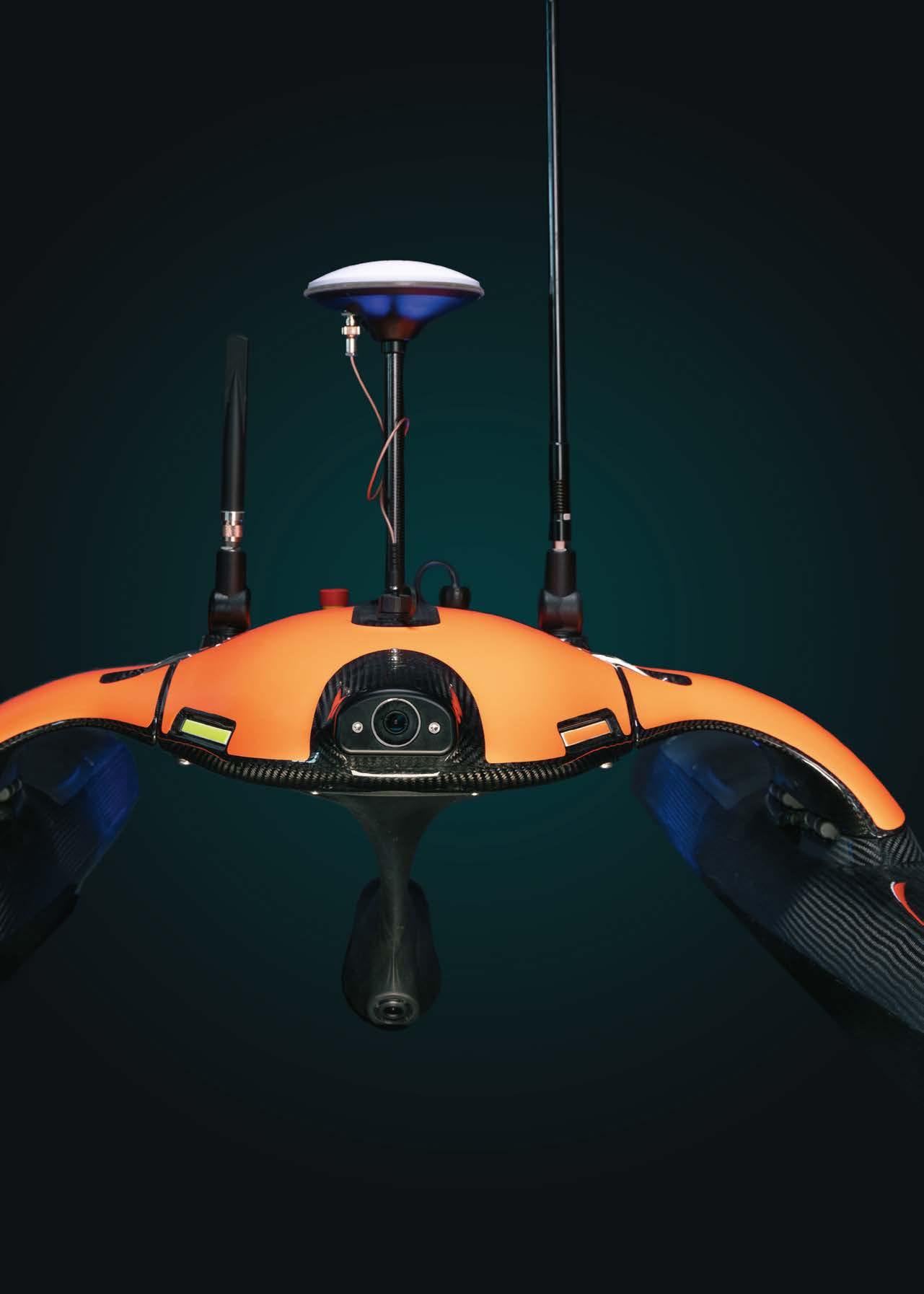Powering smart cities with airborne precision data Charting urban change from the sky
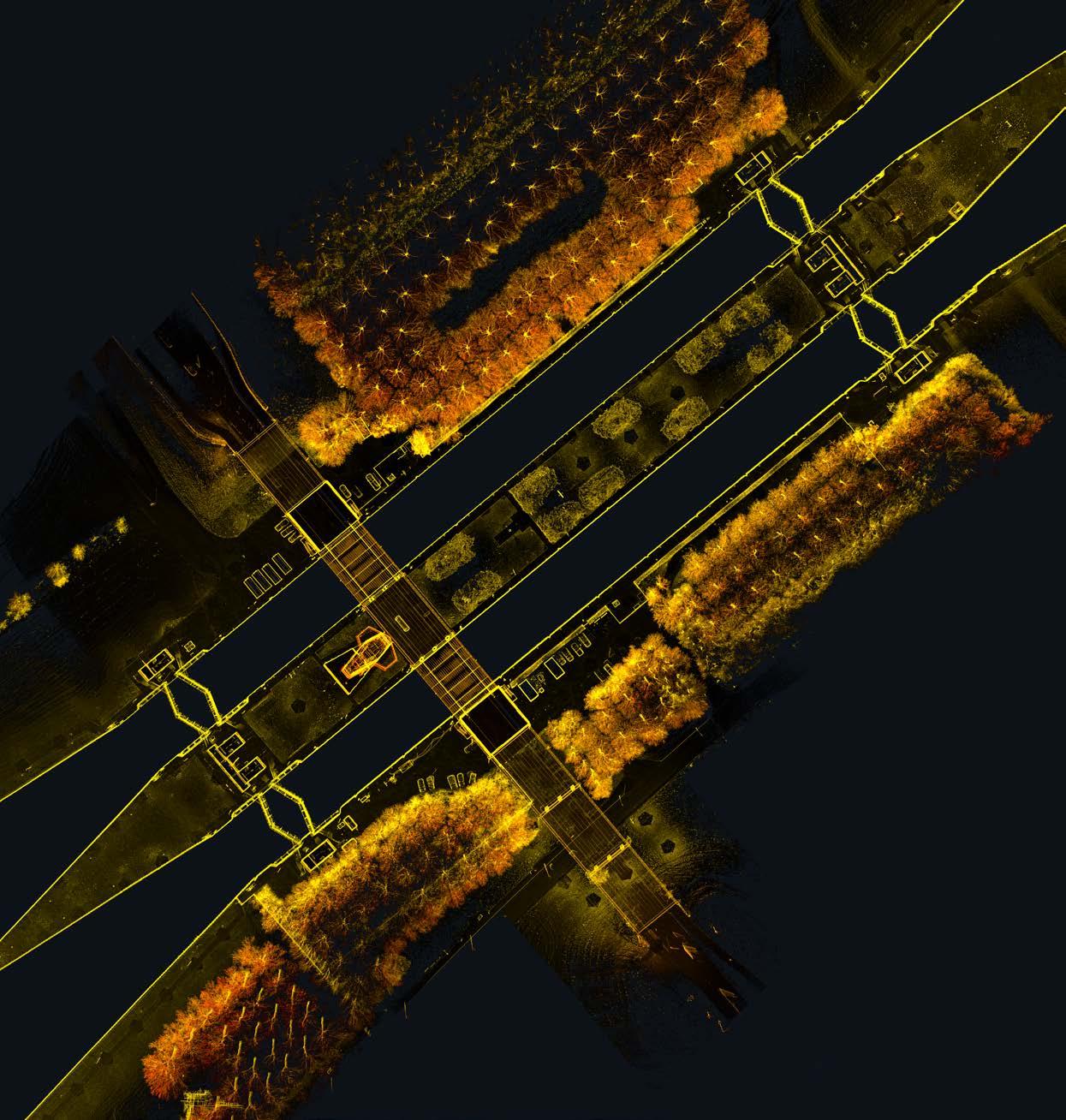
Interview with spatial storyteller Pete Kelsey
3D heritage capture in challenging environments A ‘For Dummies’-style introduction to LADM


Powering smart cities with airborne precision data Charting urban change from the sky

Interview with spatial storyteller Pete Kelsey
3D heritage capture in challenging environments A ‘For Dummies’-style introduction to LADM

Powered by cutting-edge Ultimate LiDAR™ technology, RIEGL’s latest innovations unveiled at INTERGEO 2025 once again deliver unmatched performance, precision and versatility – setting new benchmarks in 3D data capture.
The RIEGL VMX-3HA mobile mapping system
RIEGL’s VMX-3HA mobile mapping system captures the full 360° environment with scanning speeds up to 6 MHz PRR and 800 lines per second – delivering dense, detailed data without slowing down.
Whether you’re mapping city streets or highways, the VMX-3HA delivers full-environment coverage with pinpoint accuracy – even at high speeds. From fine pavement textures to overhead cables and distant vegetation, every detail is captured with clarity and depth. High point densities even at faster platform speeds ensure consistently high-quality and smooth workflows.
The RIEGL VQ-1060 airborne mapping system
RIEGL’s VQ-1060, a cutting-edge integrated aerial mapping solution designed specifically for powerline and corridor applications, seamlessly integrates multidirectional 3D laser scanning, forward and aft oblique
RGB imagery, and nadir multispectral imaging into a single, streamlined platform. Whether you’re conducting utility asset inspections, vegetation encroachment analysis or corridor planning, the VQ-1060 provides ultra-high-resolution data with unmatched efficiency!
The RIEGL VUX-820-G topo-bathymetric laser scanning system
With the VUX-820-G, RIEGL offers a complete solution making bathymetric Lidar more accessible by enabling easy integration and operation. The ‘all-in’ package includes the compact and powerful Lidar sensor, the RIEGL RiLOC-F-inside inertial navigation system, an integrated RGB camera and RIEGL’s software licences for generating georeferenced and refraction-corrected point clouds.
expanding RIEGL’s line of highperformance terrestrial laser scanners
The RIEGL VZ-1200i terrestrial laser scanner
With the VZ-1200i, RIEGL offers a 3D laser scanner especially designed for users who need a longer range, without sacrificing the speed, precision and reliability of the VZ-i series. Its versatility allows the combination of static and kinematic data acquisition, long-range coverage plus highly detailed data – in one mission.
Unlock the power of RIEGL Lidar for your applications!
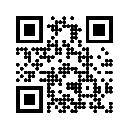

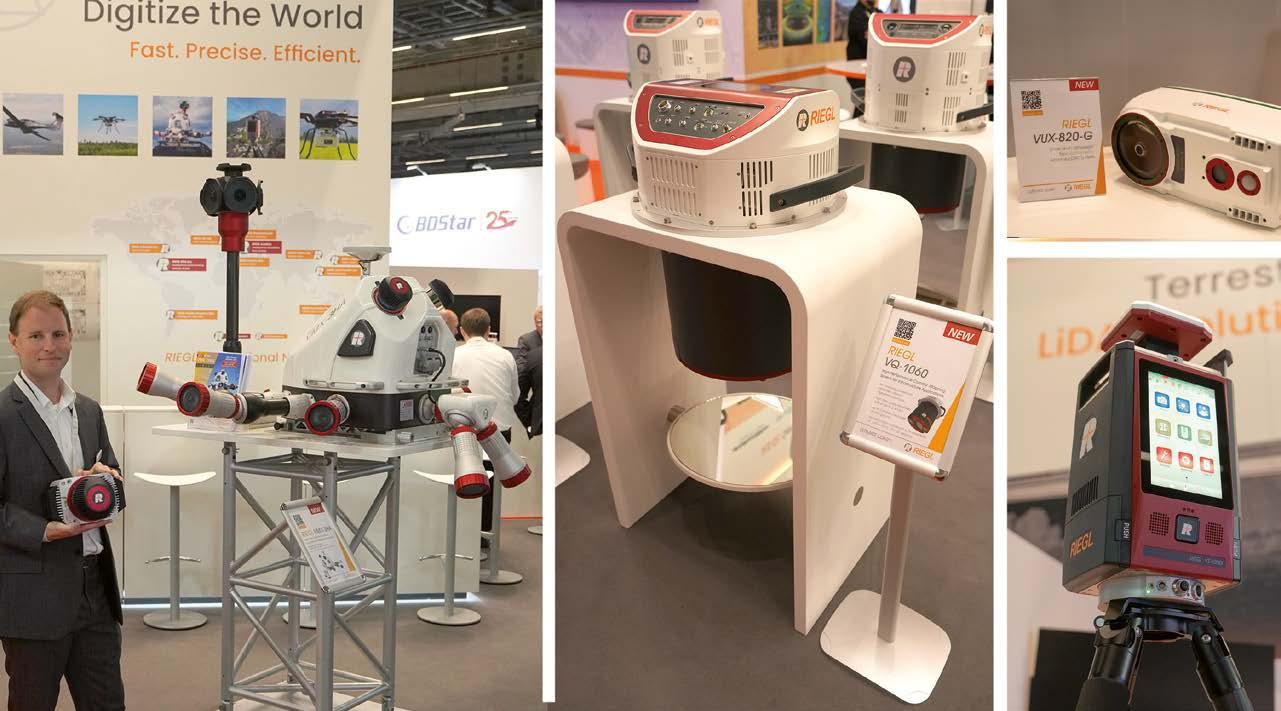
Director Strategy & Business Development
Durk Haarsma
Financial Director Meine van der Bijl
Technical Editor Huibert-Jan Lekkerkerk
Contributing Editors Dr Rohan Bennett, Lars Langhorst
Head of Content Wim van Wegen
Copy Editor Lynn Radford, Englishproof.nl
Marketing Advisors Myrthe van der Schuit, Sandro Steunebrink, Peter Tapken
Circulation Manager Adrian Holland
Design Persmanager, The Hague
GIM International, one of the worldwide leading magazines in the geospatial industry, is published five times per year by Geomares. The magazine and related website and newsletter provide topical overviews and reports on the latest news, trends and developments in geomatics all around the world. GIM International is orientated towards a professional and managerial readership, those leading decision making, and has a worldwide circulation.
Subscriptions
GIM International is available five times per year on a subscription basis. Geospatial professionals can subscribe at any time via https://www.gim-international.com/subscribe/ print. Subscriptions will be automatically renewed upon expiry, unless Geomares receives written notification of cancellation at least 60 days before expiry date.
Advertisements
Information about advertising and deadlines are available in the media planner. For more information please contact our marketing advisor: myrthe.van.der.schuit@geomares.nl.
Editorial Contributions
All material submitted to Geomares and relating to GIM International will be treated as unconditionally assigned for publication under copyright subject to the editor’s unrestricted right to edit and offer editorial comment. Geomares assumes no responsibility for unsolicited material or for the accuracy of information thus received. Geomares assumes, in addition, no obligation to return material if not explicitly requested. Contributions must be sent for the attention of the head of content: wim.van.wegen@geomares.nl.
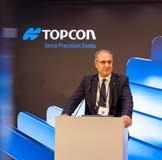
Topcon marked its return to the geospatial arena by exhibiting at Intergeo in October 2025. This provided the perfect opportunity for GIM International to speak with Ivan Di Federico who, after two decades with the company, stepped into the role of CEO relatively recently.

Few people have pushed the boundaries of spatial data, reality capture and 3D storytelling quite like Pete Kelsey. In this interview at Intergeo, he jumps from lunar coordinate systems to emerging trends, showing how the industry’s ‘cool tech’ helps tell a story to retell.

Earlier this year, FIG published the book titled LADM in the Classroom. In the style of that book, this article gives an overview of the Land Administration Domain Model (LADM), showing how the conceptual model can be applied to different scenarios by way of example.

A remarkable digital heritage initiative recently took shape in the Romanian city of Cluj-Napoca: the high-precision 3D documentation of the Casino, a sophisticated early-twentiethcentury landmark that embodies the city’s prosperity and cosmopolitan spirit.
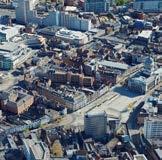
This article explores how advances in aerial mapping have played a central role in enabling this transformation, and examines –through a series of case studies – how these technologies continue to shape smart cities today. In other words: charting urban change from the sky!

The most recent edition of Intergeo left no doubt that geoinformation has moved into the mainstream. What was once a specialist field now shapes societal decisions across many areas of relevance. This article presents a roundup of the key trends at Intergeo 2025.

The Santiago Urban Dataset (SUD) combines handheld and mobile laser scanning into a single fused point cloud with eight classes. Its data fusion approach reduces occlusions from vehicles and street furniture, making SUD a strong benchmark for testing deep learning models in semantic segmentation.
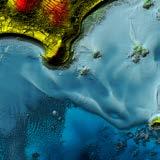
Recent advancements have opened new possibilities for exploring the seabed, especially through the fusion of airborne imaging and bathymetric Lidar data. This article examines the potential of these combined datasets for large-area shallow-water seabed classification.
Geomares
P.O. Box 112, 8530 AC Lemmer, The Netherlands
T: +31 (0) 514-56 18 54
F: +31 (0) 514-56 38 98 gim-international@geomares.nl www.gim-international.com
No material may be reproduced in whole or in part without written permission of Geomares. Copyright © 2025, Geomares, The Netherlands All rights reserved. ISSN 1566-9076

Seen from above and captured here as a point cloud, the Houtribsluizen is a lock complex located in Lelystad in the Dutch province of Flevoland. It forms part of the shipping route between Amsterdam and the province of Friesland. The imagery has been captured by Leap 3D, a company specialized in creating highly detailed digital representations of the real world. By combining laser scanning with drone imagery, Leap 3D maps sites and structures with high speed and precision. This applies to factories, bridges, locks, industrial installations and even entire facilities. Millions of measurement points merge into a detailed point cloud – a digital replica of reality with millimetre-level accuracy – providing an ideal foundation for CAD drawings or BIM models. (Image courtesy: Leap 3D)
What factors matter most when choosing a handheld 3D scanner ?
How do I set up an accurate survey in a GNSS-denied environment ?

Which sensor-drone combination is the best fit for coastal mapping ?
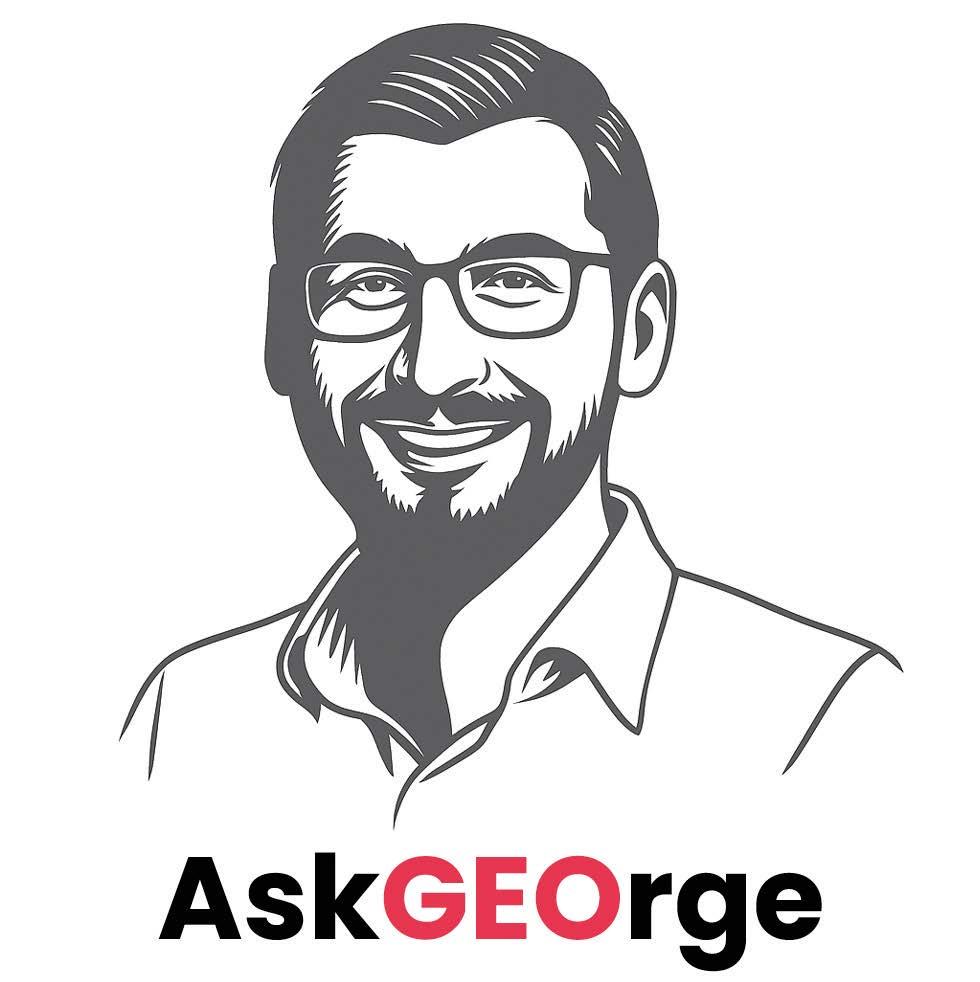
Available now on:

To get a glimpse of the latest advancements shaping the future of farming, I recently spent a day in Hannover, Germany, visiting Agritechnica – the world’s largest trade fair for the agricultural sector. With 20 vast halls filled with countless tractors, ploughs, seeders, harvesters, tipping trailers and other machinery, it’s a dynamic global hub of innovation, knowledge exchange and collaboration. And as head of content for one of the world’s leading media platforms in the geospatial industry, I couldn’t help but take the geospatial pulse at the trade fair. After all, agriculture and our industry are closely connected. In fact, farming is one of the most practical and impactful application domains of geospatial technology.
There was plenty to be impressed by. For instance, it was encouraging to see how closely innovation is tied to sustainability. But personally, having worked in the geospatial field for so many years, I found it even more satisfying that geoinformation is now playing such a prominent role in facilitating ‘precision agriculture’. At its core, precision agriculture is about managing farmland efficiently and accurately using GNSS, ground-based and aerial sensors (from drones or satellites), and onboard computers in farm vehicles and equipment. Over the past few years, the focus of precision agriculture has broadened. It’s no longer just about the GPS-guided auto-steering systems that have been integrated in tractors for many years, improving farmers’ operational efficiency by helping them drive in straight lines. Today’s applications even extend beyond monitoring soil and crop
conditions, and delivering water, nutrients and crop protection agents with pinpoint accuracy depending on a plant’s individual needs. Increasingly, precision agriculture revolves around the strategic use of data to build knowledge, make better-informed decisions and demonstrate environmental performance. One promising example is the use of advanced scanning tools to create detailed soil maps, giving farmers the insights they need to improve long-term soil health – a not-unfamiliar concept, but one that’s becoming increasingly easy to apply in practice.
Nevertheless, adoption remains somewhat limited, with only a small proportion of farmers fully leveraging site-specific measurements and insights to manage their crops variably. Many seem to have a ‘wait and see’ attitude – which is understandable, perhaps, but also unfortunate. The sector needs pioneers who lead the way and show how powerful innovative technologies can be.
Therefore, I was happy – but not surprised –to see so many familiar names from the surveying and mapping world represented at Agritechnica. The two halls that caught my attention in particular were those with exhibitors showcasing sensor-based, robotic and autonomous solutions that integrate geospatial techniques for truly innovative applications – such as reducing the need for chemicals by targeting weeds with lasers instead of herbicides. By helping farmers optimally leverage geodata in their everyday decision-making, the geospatial industry can provide the compass to navigate the agricultural sector towards a future of smarter operations, higher efficiency and more sustainable practices.
Wim van Wegen head of content wim.van.wegen@geomares.nl
In a significant expansion of Trimble’s sports marketing strategy, the company has announced a multi-year global sponsorship agreement with Liverpool Football Club. The collaboration is grounded in shared values: precision, innovation and a dedication to transforming how work gets done, whether in construction environments or in world-class football. As part of the partnership, Liverpool FC will apply Trimble technology to modernize its infrastructure and operations. A priority focus is the recently unveiled refresh of the Liverpool FC Academy, the place where the next generation of players learn, develop and thrive. Using Trimble SketchUp, the club aims to redesign its high-performance centre into a truly industryleading environment for player development. The sponsorship will also bring broad global visibility to Trimble. The brand will feature at the stadium and across Liverpool FC’s digital platforms, connecting with a worldwide audience of more than 500 million supporters. This presence reinforces Trimble’s mission to link the physical and digital worlds and show how data-led precision transforms the way people build, shape and move the world.

In a move designed to guide the profession through a period of rapid technological transformation, the Royal Institution of Chartered Surveyors (RICS) has recently introduced the first global professional standard governing the responsible use of artificial intelligence in surveying. The standard is set to take effect on 9 March 2026, applying to all RICS members and regulated firms worldwide. As AI becomes increasingly embedded in valuation, construction, land management and infrastructure services, RICS aims to ensure that the technology is deployed transparently, ethically and with rigorous professional oversight. The new standard sets expectations that reflect this acceleration in technological adoption. It places emphasis on robust governance and risk management, requiring organizations to establish clear policies for responsible data use and system oversight, supported by documented due diligence and continuous risk evaluation. Surveyors remain accountable for all outputs generated through AI-assisted workflows and must apply professional judgement when assessing the reliability and suitability of those results.



ISO certification propels AAMS’s growth strategy in the
beyond
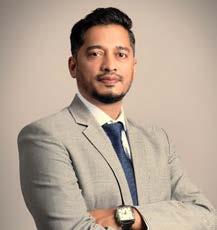
Advanced Aerial Mapping Services (AAMS), a leader in drone-based geospatial solutions, has achieved ISO 21384-3:2023 certification, marking a significant milestone in its growth and setting a new benchmark for safe, reliable and trustworthy drone operations in the Middle East and North Africa (MENA) region. The certification, conducted by Altomaxx Technologies, follows an extensive audit process that concluded at AAMS’s Riyadh headquarters. The achievement places AAMS among the first companies in the region to meet the international standard for uncrewed aerial systems (UAS) operations. Headquartered in Saudi Arabia with offices in the United Kingdom and South Africa, AAMS has positioned itself as a go-to partner for aerial mapping and geospatial solutions. The company is recognized for its ability to operate seamlessly between agile drone systems and crewed aircraft, delivering a level of flexibility that sets it apart in both the Saudi and global markets. For Usman Khan, CEO of AAMS, the certification is about more than compliance – it represents the company’s long-term vision. “This milestone is more than a recognition of our capabilities; it reflects our commitment to safe, reliable and innovative aerial survey operations,” said Khan. “This achievement strengthens our position as a leader in the MENA region, setting the standard for excellence in drone services and advancing our vision to deliver trusted aerial solutions.”
Usman Khan, CEO of Advanced Aerial Mapping Services.
(Image courtesy: AAMS)

Emlid has introduced a new generation of all-band RTK receivers including the Reach RX2, Reach RS4 and Reach RS4 Pro. They are built for surveyors, GIS specialists and construction teams seeking reliable, high-accuracy positioning with consumer-level ease of use. This EU-based developer of high-precision GNSS receivers and software is on a mission to make professional-grade precision simple, fast and scalable. Founded in 2014, Emlid has grown into a distinguished brand of high-precision GNSS receivers and software trusted by professionals – ranging from civil engineers and GIS experts to drone-mapping professionals – in over 100 countries. With offices in Lisbon and Budapest, the company continues to focus on making professional positioning technology more accessible and efficient through its combination of robust hardware and streamlined software. The Reach RS4 and RS4 Pro mark a significant step forward from previous Emlid models, combining rugged engineering with faster workflows and uncompromised accuracy. The flagship Reach RS4 Pro introduces innovative camera-vision technology that blends traditional RTK with visual positioning to cut survey time and simplify work in complex environments. Both receivers support all-band RTK reception (L1/L2/L5/L6) across every major satellite constellation, ensuring consistent performance even under canopy or in urban canyons. An integrated antenna system with diversity LTE, dual-band Wi-Fi and Bluetooth provides a clean GNSS signal and stable fix, while the Emlid multi-band radio system – up to 2W and interoperable with third-party gear – offers flexible correction transmission at 450MHz and 915MHz for both licensed and licence-free use.
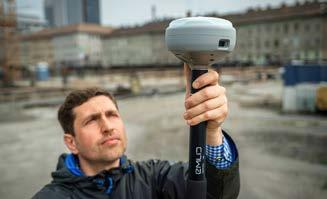

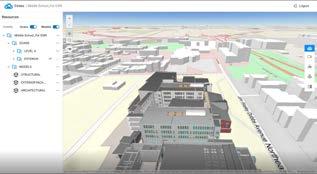


Topcon Positioning Systems has introduced a range of innovative hardware and software solutions that enhance connected workflows across the surveying and mapping sector. The new additions to its geomatics portfolio were unveiled at Intergeo, the leading international trade fair for geodesy, geoinformation and land management, held earlier this year in Frankfurt. Intergeo marked the first showcase of new products since Topcon announced a dedicated business structure focused on delivering high-precision technology, software and services for geomatics professionals. According to Neil Vancans, head of the newly established Geomatics Sales Unit, the new setup reflects a shift towards helping professionals work more efficiently through improved collaboration and simplified digital workflows. He described the development as the start of a new chapter for Topcon’s geomatics business, one that builds on the company’s reputation for innovation while responding directly to the sector’s growing demand for integrated, data-driven solutions. At the heart of the company’s latest advancements is a new scanning portfolio, supported by a software platform intended as a long-term companion for customers. Vancans emphasized that the approach is centred on flexibility and accessibility, enabling the integration of sensors across a range of price points and accuracy levels within a single platform. This, he noted, allows users to select the right tool for each task while benefiting from a unified and intelligent ecosystem that brings artificial intelligence into everyday workflows.

With its new widget for ArcGIS, Cintoo is transforming how professionals interact with high-resolution laser scan data inside Esri’s ecosystem. The company is responding to the blurring of the line between GIS and reality capture as organizations increasingly rely on spatial intelligence to manage complex assets and infrastructure. The Cintoo Widget for ArcGIS enables users to stream and explore detailed, mesh-based Lidar datasets directly within the familiar ArcGIS environment. By converting terrestrial and mobile laser scans into lightweight 3D meshes, the solution preserves full point cloud fidelity while making previously cumbersome datasets accessible and actionable across teams. With immersive 360-degree panoramic visualization and virtual inspection tools, the integration brings a new level of precision to asset management and site analysis – especially in indoor and brownfield environments where conventional GIS tools often struggle with dense spatial data. Users can compare scans with BIM and CAD models, track asset conditions, and manage annotations – all without leaving ArcGIS. From monitoring construction progress to optimizing factory layouts or overseeing large-scale facilities, the Cintoo widget enables decision-makers to pair geospatial analysis with real-time, ground-truth data.
DJI introduces Zenmuse L3 to advance long-range Lidar drone surveying
DJI has expanded its enterprise portfolio with the launch of the Zenmuse L3, a long-range Lidar sensor designed to accelerate high-accuracy aerial surveying across large and complex environments. Positioned as a major step forward in DJI’s Lidar ambitions, the Zenmuse L3 combines a 1,535nm long-range Lidar module, dual 100MP RGB cameras and a high-precision positioning system. The result, according to DJI, is a single payload solution that delivers detailed terrain models, high-resolution imagery, and multiple mapping products in one flight. The new Lidar system at the heart of the Zenmuse L3 is designed to maintain strong performance on low-reflectivity surfaces, with a detection range of 950m at a 100kHz pulse rate under 10% reflectivity and 100klx ambient light. Operators can adjust the pulse rate to balance power efficiency and data density. DJI specifies 5mm ranging repeatability at 150m (1σ), and vertical accuracy improvements support mapping scales down to 1:500. A 0.25mrad beam divergence enables detection of narrow features such as power lines, while up to 16 returns and two million points per second allow deeper canopy penetration. A new star-shaped scanning mode further enhances accuracy across wider fields of view in forested or urban environments. The sensor’s dual 100MP 4/3-inch CMOS RGB cameras feature mechanical shutters and deliver imagery with a ground sample distance of 3cm at a 300m flight altitude. A 107° horizontal field of view enables significantly broader area coverage per capture, supporting photogrammetric outputs such as digital orthophoto maps alongside Lidar deliverables.
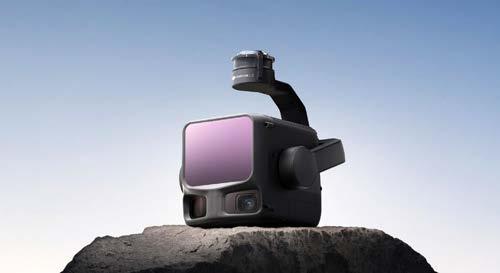


Bentley Systems has enhanced the Cesium platform with integrated reality modelling services, improving interoperability across the physical and digital worlds.
(Image courtesy: Bentley Systems)

Bentley Systems has expanded Cesium’s capabilities by introducing new reality modelling services within the Cesium platform, strengthening its open ecosystem for the built and natural environment. The company also revealed enhanced geospatial tools for project delivery and asset performance, along with a new immersive application designed to connect infrastructure teams and stakeholders – all powered by Cesium’s 3D geospatial technology. One year after acquiring Cesium, Bentley has made major strides in uniting the two companies’ technologies. The integration not only enriches Bentley’s own portfolio but also enables developers to create applications that bring infrastructure data to life, visualized in real time and in precise geospatial context. “Our vision for infrastructure engineering is built on openness,” said Patrick Cozzi, Bentley’s chief platform officer. “With the integration of iTwin and Cesium capabilities, we are creating the open platform for the built and natural environment, providing all the necessary data for infrastructure professionals to design, build and operate in a real-world context.” Bentley has added reality modelling services from iTwin Capture to Cesium ion, creating a complete, automated pipeline from data capture to geospatial visualization. iTwin Capture creates engineeringgrade reality models from imagery and applies AI-powered feature detection, while Cesium ion allows developers to create and host content in the cloud to power 3D geospatial applications.

Marking a further step in BDStar Navigation’s expansion into international highprecision positioning markets, subsidiary TruePoint has introduced its TruePoint.CM network real-time kinematic (NRTK) service across Europe. Supporting all major global satellite navigation constellations (GPS, GLONASS, BeiDou, Galileo and QZSS), the service is designed to improve signal reliability in complex European environments. TruePoint.CM is built on the company’s chip-cloud integration architecture and works with both Unicore and third-party GNSS hardware through standardsbased interfaces. The company says the service already provides wide-area coverage throughout Europe, offering centimetre-level accuracy with fast convergence times. Prior to launch, TruePoint conducted extensive validation testing in more than 40 cities across 12 European countries, including over 300,000km of dynamic field trials. The platform uses an adaptive data protocol intended to reduce bandwidth consumption by up to 70% while maintaining full positioning accuracy, a feature aimed at helping customers reduce operational data costs. Remote diagnostics and overthe-air firmware updates are incorporated to support more efficient device management in the field. By linking directly with positioning chips or modules, TruePoint.CM supplies the real-time centimetre-level data needed for autonomous movement and route decisions. (Image courtesy: TruePoint)

Esri is bringing its geospatial AI platform, ArcGIS, together with the scalable cloud infrastructure on Amazon Web Services (AWS). This will enable organizations to deploy enterprise-scale geospatial AI solutions with greater efficiency and reliability. Additionally, they will be able to leverage the advanced cloud capabilities on AWS alongside ArcGIS software’s sophisticated mapping and spatial analysis tools. With the volume of geospatial data growing rapidly, organizations are seeking more intelligent ways to process and analyse spatial information. Esri, a global leader in geographic information system (GIS) and geospatial AI technology, has recently signed a new strategic collaboration agreement (SCA) with AWS to advance the integration of generative AI (GenAI) into geospatial solutions and workflows. This integration allows organizations to scale operations dynamically in line with their evolving geospatial data needs, ensuring optimal performance and cost-effectiveness. Through the new agreement, Esri will accelerate development and interoperability with AWS. This expanded collaboration will focus on three areas: developing geospatial AI through new foundation models (FMs), scalable training and inference architectures; advancing the next generation of ArcGIS AI assistants to improve user productivity; and building agentic architectures that simplify and enhance the user experience. “AWS’s cloud capabilities combined with Esri’s geospatial expertise empower customers to solve complex challenges through advanced location intelligence,” said Amy Belcher, AWS director, WWPS global ISV sales and GTM. “This strategic agreement will accelerate the development of GenAI-powered solutions that deliver meaningful business outcomes while simplifying how organizations leverage geospatial data at scale.”
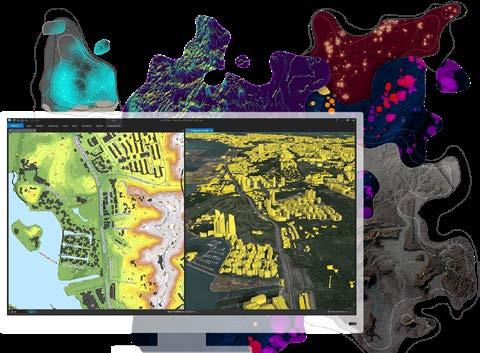



From field to finish with confidence using the CHCNAV RS10
Capturing complete data in complex environments is often slow, inconsistent and split across multiple tools. The CHCNAV RS10 solves these challenges with an all-in-one system that unifies GNSS, laser scanning and visual SLAM for accurate outdoor and indoor mapping. Real-time point cloud visualization and precise GNSS RTK positioning help teams work faster and avoid resurveying.
The SmartGo app streamlines data collection and quality checks, while CoPre and CoProcess software handle point cloud optimization, LAS export, modelling and CAD drawing. With its seamless workflow, the RS10 minimizes processing time and delivers dependable georeferenced results for surveyors, engineers and BIM teams.
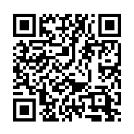

Request a demo today.
GIM
International interviews
Ivan Di Federico, CEO, Topcon
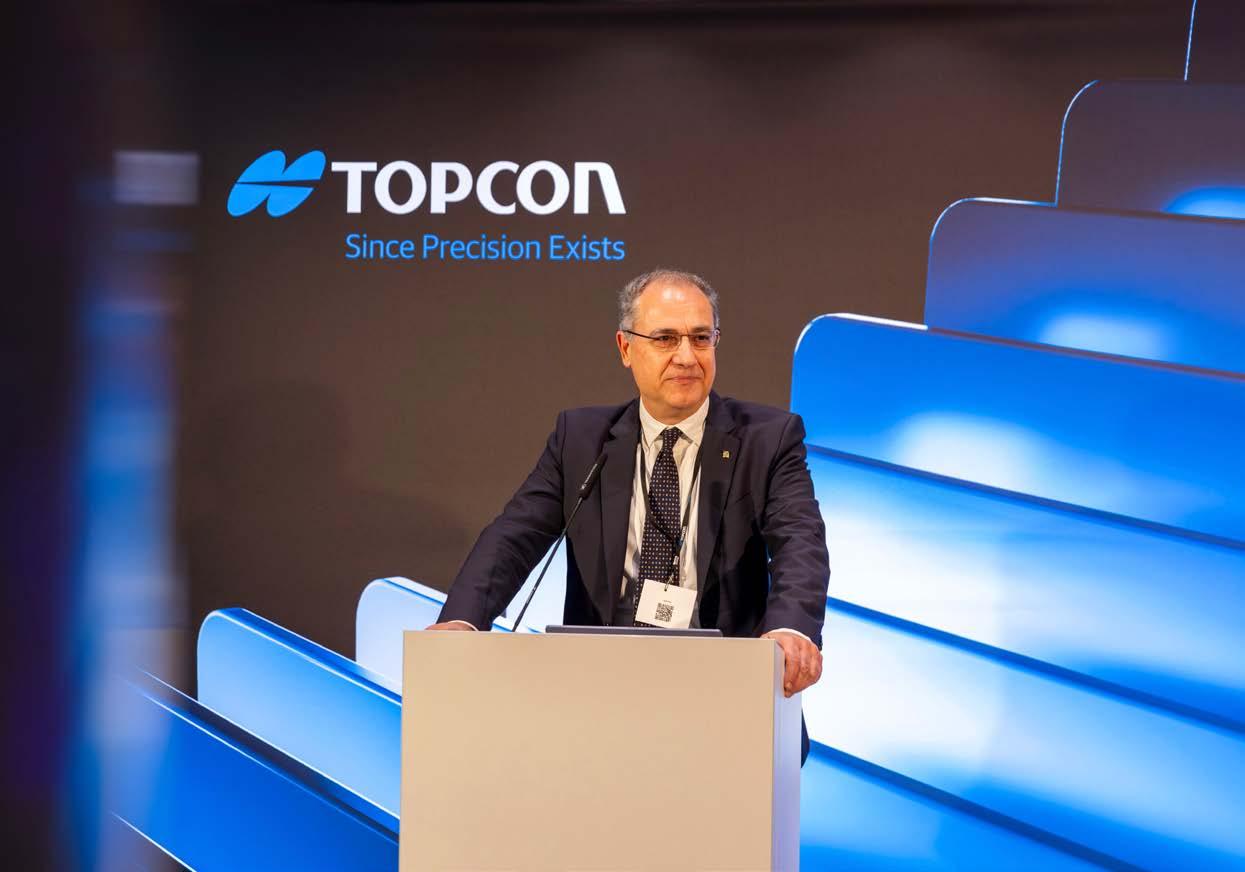
By Wim van Wegen, GIM International
In recent years, Topcon appeared to focus primarily on the construction and infrastructure industry – a domain in which the company’s equipment and solutions are essential for measuring, automating and digitalizing the built environment. But now, the firm is re-embracing the discipline that underpins it all: geomatics. Topcon marked its return to the geospatial arena by exhibiting at Intergeo in October 2025. This provided the perfect opportunity for GIM International to speak with Ivan Di Federico who, after two decades with the company, stepped into the role of CEO relatively recently. He is a man with a clear vision who is keen to make Topcon’s presence felt again in the geospatial sector – which has grown far beyond the traditional realm of surveying into a much broader field of spatial intelligence and data-driven reality capture.
Topcon has now set up a dedicated business unit for geomatics. Should we view this as a renewed commitment to the geospatial industry?
“Absolutely, and not only that. Our dedicated business unit shows that we place our customers and the entire mass data capture segment right at the centre of our attention. Last year, we did not participate directly at Intergeo, although some of our recently acquired companies had booths. We ourselves had little new to showcase at that moment because we were working towards what is on display at our booth this year: a substantial portfolio of innovations, available on the market as of November. That was our main focus.”
Di Federico explains that they used to refer to this business area as ‘geo’, reflecting its roots in the traditional surveying world, but that’s now only a small portion of what the geospatial field has become. He sees today’s geomatics as being centred on mass data capture, reconstructing reality, creating digital twins, enabling smart cities and smart infrastructure, and connecting these rich datasets with building information modelling (BIM) technologies in construction – an area where Topcon sees strong synergy.
“Everything from under the ground to the sky needs to be part of a continuously updated, unified real-world map, a reference that enables modern and future machinery to operate with confidence and precision, fully under control. Precision is at the core of what we do. As our slogan says, Topcon is there ‘since precision exists’, and we have more than 90 years of history in this domain. We remain committed to advancing that legacy in an increasingly complex and fully digital reality-capture environment. And our presence at Intergeo this year is a statement of our commitment and the large set of investments we have made over the past few years to get to the point where we have the entire product range needed to be market leader in this particular sandbox.”
Which opportunities do you see emerging from the decision to establish a new geomatics business unit, and how will it strengthen Topcon’s contribution to the geospatial profession?
“The single-word answer to your question is: focus. We have a very strong market presence and a strong tradition in technology for construction, including collaboration with mainstream OEMs. But being so successful in one market sometimes makes it difficult to perceive the power of other markets, especially in the ever-expanding geospatial industry, which extends to utilities, infrastructure, digital twins and so on. We now have dedicated people to look at these particular markets all day long. And this brings focus. Therefore, we are transforming what was called ‘geo’ into ‘geomatics’ and giving it a single leadership and a clear identity inside the company: its own P&L and its own way of governance and controls which are much more adapted to the market conditions. This enables the internal organization to make the right decisions and also the right investments that are required to be market leader.”
“This will further strengthen the Topcon brand. Being part of a family of unified software that essentially covers the files generated by all the different kinds of geomatics instruments is really the key to making life easier for our customers and enabling them to extract
the most value out of their time for profitability. Our customers have already shown large appreciation for this.”
The role of geomatics is shifting from traditional surveying towards data integration and actionable insights. How is Topcon supporting professionals in adapting to this broader, more data-driven future?
“This really goes to the heart of what we are focused on. Every application, every design and every data capture project requires the right tool for the job. The range of tools available today is much wider than ever before. We have moved far beyond a world defined only by robotic total stations or digital levelling instruments. There is now a broad spectrum of instruments suited to very specific tasks, and our commitment is to ensure that customers have access to the best possible options with the highest standards of precision and accuracy.”
If the data is not clean and precise from the start, the entire workflow suffers
“When you transform reality into numbers – the process we call ‘digitalization’ – you can easily generate a lot of noise or low-quality data. That immediately impacts everything that follows, whether visualization in software, feature extraction such as identifying corners or edges, or AI-driven recognition in dense point clouds. If the data is not clean and precise from the start, the entire workflow suffers.”
Di Federico argues that having a single cloud environment where all instruments share their data is equally crucial. Without such a unified system, he points out, firms are forced to spend excessive time and money integrating information from multiple cloud platforms – paying for extra licences, paying again to transfer datasets, and wasting numerous hours on simply moving files around. “Before analysis can even begin, valuable time is spent cleaning and consolidating data that should have been usable from the moment it was collected. That is why we not only focus on precision at the source, but also on a unified workflow through one cloud and one modem system. We call this the ‘golden initiative’, and for the past two years we have concentrated on bringing everything together so that no matter which instrument gathers the data, it enters a seamless workflow.”
“Here at Intergeo, you can already see how this comes together in the new set of well-structured tools that streamline data into our existing platforms – such as Collage – for publishing, visualization and measurements in 3D. At the same time, the data is fully prepared for use in the major industry platforms from our key partners, Esri and Autodesk, who are central to our journey into a fully digital 3D world. The destination is clear: clean, precise data from the start, unified in a single ecosystem, and ready to be used immediately in the applications that drive our industry forward. That is where we are today – and exactly where we are going.”
With increasing demand for accurate and reliable positioning across many sectors, how does Topcon plan to balance investment in new innovations such as AI, data fusion and autonomous survey systems with supporting its existing hardware and services portfolio?
“Firstly, I’d like to point out that Topcon has more than 400 OEM customers, including companies on the Fortune 500 list, and our commitment to long-term support remains unchanged. We guarantee at least ten years of availability for parts, repairs and service – whether through our hotline, our dealers or factory support. This is essential to our business, which continues to be large and demanding, so a dedicated portion of our investments is focused on maintaining that level of reliability.”
“At the same time, the ongoing digital transformation – sometimes orderly, sometimes quite frantic – must be monitored closely, and we must position ourselves strongly within it. That is why we have a separate investment stream entirely devoted to developing new instruments, and especially the software that powers them.”
The CEO explains that the definition of software has expanded far beyond what it once was, and that this is reshaping the geospatial sector: “In the past, ‘software’ simply meant the firmware inside the instrument or an office application used after the data was extracted. Today, when we say software, we are referring to multiple layers. The first layer is still the firmware on the instrument itself, but it has evolved dramatically thanks to far more powerful processors. These allow us to perform sophisticated graphical analysis directly onboard – shifting many tasks that once required office software into the instrument itself.”
“Then comes the connectivity layer: firmware and systems that manage direct data transfer over the internet to a single cloud environment. Once the data reaches the cloud, it becomes available for the next steps: analysis, decision-making and moving the project forward, whether that involves vertical construction, horizontal infrastructure, underground utilities, or even tunnel work, which we are introducing here at Intergeo.”
From there, he continues, cloud-based software works hand-in-hand with advanced office software, and everything is complemented by mobile applications. “Every product and every workflow connects to apps that travel with the user – providing access to information even when they leave the job site or the office. Mastering these four connected environments – inside the instrument, within the cloud, on office systems, and on mobile devices – is exactly where we are investing our resources. And we are very proud of what has been achieved. Here at Intergeo, that commitment is on full display: of the nine new products we are introducing, three are entirely new software platforms that demonstrate how far we have come on this digital path.”
Artificial intelligence has made its entry into the geospatial sector and is already changing the industry. How has Topcon incorporated AI and machine learning into its surveying and geospatial solutions, and where do you see the biggest opportunities to build on this momentum?
“Investment in AI represents one of the largest areas in our budget in recent years, not only for geomatics but also for construction.
The reason is clear: we are one of the few companies that can truly leverage the power of a very large dataset, built over many years, across job sites worldwide, and enriched by the data coming directly from our instruments.”
“We were the first, back in 2012/2013, to launch a technology that integrated a modem into every robotic total station: Topcon Shield. Those instruments were constantly connected to a single cloud, which means we have collected years and years of insights into utilization, positioning and how customers operate our solutions, wherever they are in the world. The same is true for our machine control systems and for agriculture, where connectivity has been standard practice for an even longer time. This gives us an exceptionally rich real-world dataset, which is exactly what AI needs in order to learn.”
“AI already plays a key role in the software you see on the market. Automatic tagging, object recognition and feature extraction – think of EdgeWise or Verity – rely on extremely advanced AI-powered analysis of point cloud data. These are not future concepts. They are commercially available and performing in the field today.”
Our exceptionally rich real-world dataset is exactly what AI needs in order to learn
According to Di Federico, what is coming next is even more exciting. He leans in as he describes a future in which humans interact with machines as naturally as they interact with one another. “Imagine simply talking to an excavator and receiving an intelligent response. We are developing exactly that. These systems will have true ‘agency’ – deep knowledge gained from machine learning applied to authentic, not simulated, datasets. Once trained, that intelligence can be embedded directly at the edge – inside the instrument, inside the vehicle – while remaining connected to the cloud so it continues to learn from other machines and instruments in operation. As we move forward, AI will become a real partner: supporting you while you operate equipment, manage a project or control a vehicle, and helping ensure that the result is consistently more precise and more efficient.”
Being an early adopter of new technologies can be a growth driver, but also carries risks for survey firms. How can a manufacturer like Topcon help customers navigate those risks while still pushing the boundaries of innovation?
“I really want to thank you for this question, because it addresses one of the most critical yet least discussed topics in our industry. We see it as our role to provide the right data, in a single cloud environment, with the best tools available – both our own and those from leading partners – to help our customers achieve the results they need. Now that every instrument is connected – one modem,
one cloud – firmware is constantly updated over the airwaves. This means there is a real chance that one day, within the next few months, a user will press the start button on the job site and their instrument’s interface will look different or new features will have appeared. And that is part of the value we provide. Users are entering a recurring service ecosystem, similar to how smartphones are updated. These updates are an integral part of the product’s lifecycle.”
“The product you buy is not the same product you work with three or four years later – and we guarantee that evolution. But it’s true that this evolution also brings a challenge. You no longer need to look for innovation; it comes to you – but when it arrives, your first reaction is often frustration. The interface is new. The workflow changes. It feels unfamiliar. There are very good reasons for these improvements, but there is not always time on the job to understand them.”
“That’s why we ask for a commitment to training, ideally twice a year, at one of our professional centres. These centres exist across the world. We have numerous facilities in Japan, North America, and Europe, and most recently we opened a new one in Malaysia to serve Southeast Asia. Each is dedicated to ensuring that you remain proficient and efficient in using both instruments and software to deliver excellence to your customers.” In Europe, for example, the company operates a 55-hectare facility in Italy – located between Bologna and Modena – with seven buildings and three dedicated test sites. There, Topcon hosts dealers, construction professionals and geomatics customers for training in collaboration with universities.
Continuous learning, Di Federico emphasizes, is essential. “Training must be part of the product experience, ensuring our customers stay connected to the latest knowledge. We schedule sessions strategically throughout the year – often during seasonal slowdowns – so that our communities in agriculture, construction and geomatics can participate. At that single location alone, we deliver more than 60 training events per year, typically four days each, with 40 to 50 participants. These sessions focus on the instruments they already own, because the firmware has evolved, and the software they already use,

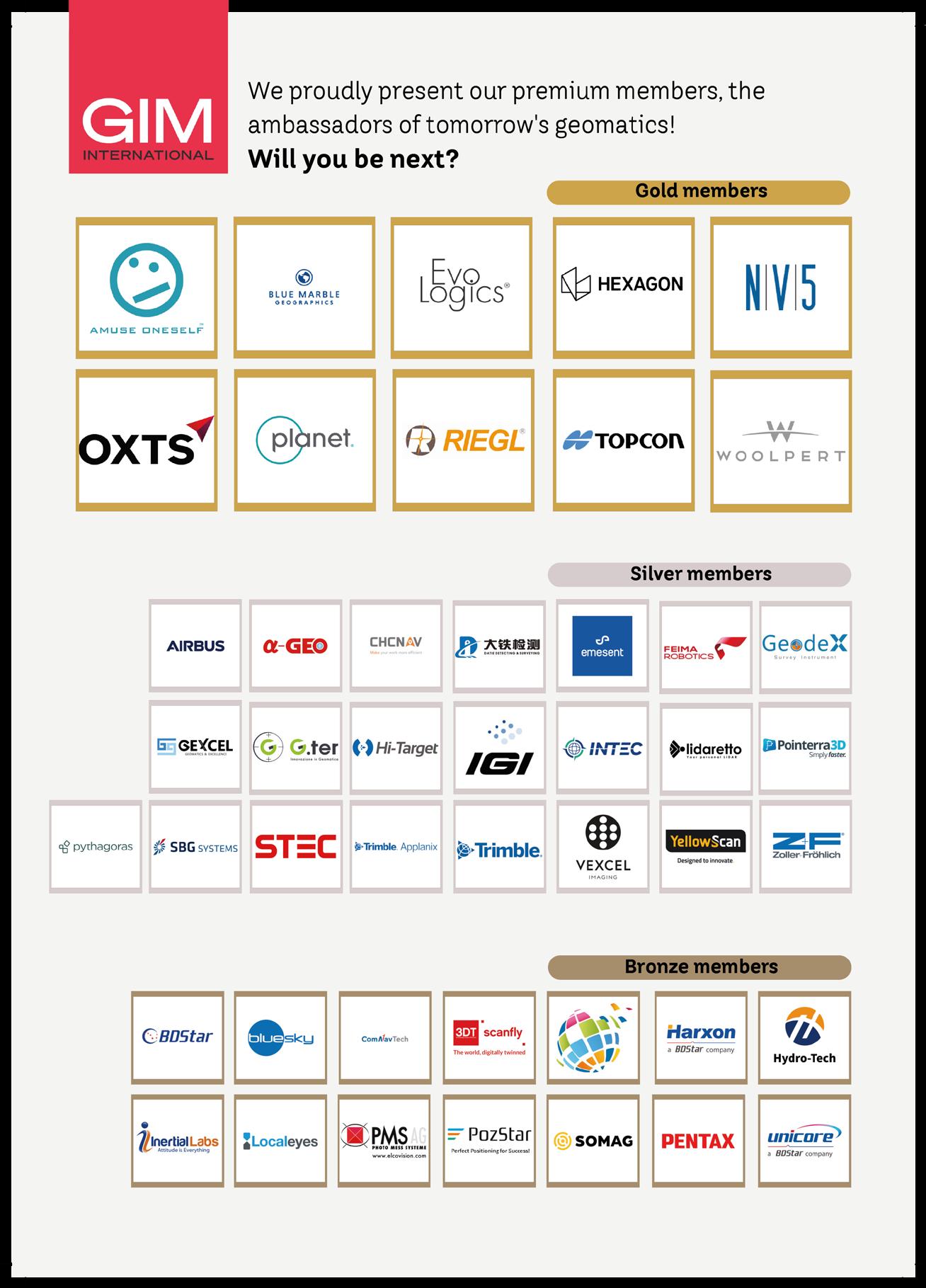
because new features have been added. They also introduce new workflows that take advantage of these capabilities. If firmware has been updated, it is because there is now a faster, more efficient way to do the same job. Knowing how to use it unlocks the productivity.”
So what is Di Federico’s key message to the market? “The evolution happens in the cloud, it happens inside the instrument, and it happens in the training that supports you. We are committed to keeping this triangle active, and always moving forward.”
Surveyors have always been guardians of integrity in mapping, but industry professionals are now being asked to evolve from data managers into geospatial information managers. How do you see this transformation reshaping the very identity of the surveyor?
“Surveyors are indispensable. We cannot operate without their specific skills, knowledge and professional integrity. So I would not say that the identity of the surveyor needs to be reinvented. On the contrary: their role is more essential than ever!”
Di Federico warns against the growing misconception that technology alone can replace the surveyor. “You can find videos online where someone scans a site with a smartphone and suddenly believes they are producing trustworthy survey data. That is a dangerous assumption. It creates the illusion that anyone can be a surveyor, and that precision no longer matters. History reminds us what happens when boundaries and measurements are not trusted. A couple of centuries ago, disputes over property lines could lead to duels. We do not want to return to a world where inaccurate data causes conflict, inefficiency or costly mistakes.”
“Surveying is grounded in rigorous understanding… of RTK, of millimetre-level accuracy, of geometry and geodesy. That level of

Ivan Di Federico serves as president and CEO of Topcon Positioning Systems, positions he assumed in September 2024 following a distinguished career with the company that began in the 2000s. In his current role, he is keen on creating and embracing disruptive technologies to keep the business on a steady path towards future growth. He also leads key initiatives focused on strategic business alliances and acquisitions. Di Federico holds a BSc in Aeronautical Engineering from the University of Pisa, Italy, and an MBA from The Open University.
precision must not be compromised. If we become complacent and accept ten or 20-centimetre errors as ‘good enough’, we go backwards. We undo decades, even centuries, of technological evolution.”
“So yes, the tools are evolving. And yes, surveyors are increasingly managing geospatial information rather than just data. But the foundation of the profession remains unchanged: trusted measurements! Use the right instruments and the right software, and work with partners who respect and support the value of professional surveying. That’s how the identity of the surveyor not only survives, but grows in importance.”

By Malumbo Chipofya, Andre da Silva Mano, Abdullah Kara and Christiaan Lemmen
Earlier this year, FIG published the book titled LADM in the Classroom. In the style of that book, this article gives an overview of the Land Administration Domain Model (LADM), showing how the conceptual model can be applied to different scenarios by way of example. It also provides guidance on how to use LADM in the Classroom and associated materials to further develop LADM competencies.
Information is the fuel on which all land administration processes run. Simply put, the execution of a land administration process is the flow and transformation of land-related information within and between organizations tasked with the determination and/or enforcement of the legitimate use of land.
This flowing of information must be consistent if it is to be relied upon by different organizations (and the public), and any transformation thereof must be based on transparent and deterministic (predictable) rules or procedures. However, land administration archives and document repositories tend to grow over time and, due to the complexity of land information, become increasingly difficult to search and maintain.
The Land Administration Domain Model (LADM) is a conceptual model designed to support the development of land information systems (LIS) including software applications, workflows, databases and user interfaces, in a way that addresses these challenges and more. LADM is an international standard published by the International Organization for Standardization (ISO) as ISO 19152. The first edition was published in 2012 and the publication of a second, multipart, edition is nearing completion. The standard specifies a collection of land administration concepts common to most land administration systems (LAS) across the world, as well as
relationships between these concepts. It provides the most complete template for how land administration information can be organized to meet LAS needs. LADM Edition I forms the focus of this article and of LADM in the Classroom, published by the International Federation of Surveyors (FIG) in April 2025. LADM Editions I and II are backwards compatible.
Technically, LADM is realized as a Unified Modelling Language (UML) class model. It organizes land information into three main groups or ‘packages’: ‘Party’ (all
records related to entities involved in land administration procedures, including private individuals or collectives and public officers and institutions), ‘Administrative’ (all records related to administrative handling of rights, responsibilities and restrictions [RRR]), and ‘SpatialUnit’ (all records related to pieces of land or eligible surfaces and threedimensional spaces that are – or can be –subject to land rights claims).
So how can data be structured using LADM as a template? To illustrate the application

Figure 1: Cadastral map of a fictitious village used to illustrate LADM concepts (above) and a triple of Party-RRR-SpatialUnit (below) illustrating a land tenure record.
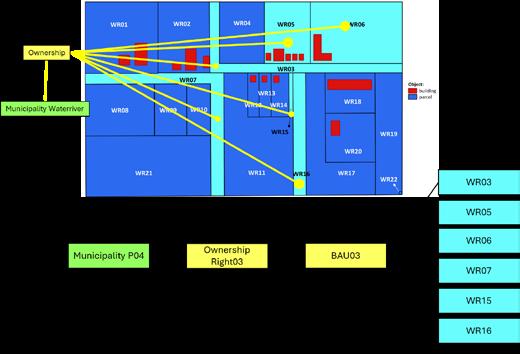
Figure 2: When a single party holds uniform rights over multiple spatial units, those units are bundled into a BAUnit.
of LADM, the book LADM in the Classroom introduces a fictional settlement: the small village of Waterriver. The material does not assume UML knowledge or specific technical skills. The map in Figure 1 represents the set of parcels recorded in the Waterriver cadastral database. It uses a basic template with the following structure: Party has Right/Restriction/Responsibility (RRR) on SpatialUnit. Even with this simple example, several cases can be demonstrated.
Multiple spatial units
The citizen in Figure 1, Carlos, is the only party with a right on one spatial unit. But what if a party has rights on more than one spatial unit? LADM supports bundling together multiple spatial units linked to the same party using the concept of a Basic Administrative Unit (BAUnit).
This can be represented by the diagram below the map in Figure 2. The Municipality of Waterriver holds ownership rights on spatial units WR03, WR05, WR06, WR07 and WR016. These are bundled together under BAUnit BAU03. The labels are identifiers which should be unique within the LIS. The spatial units are of different types (roads, parcels designated for business purposes, a water body) but the municipality holds a uniform ownership right on all of them.
This ‘instance diagram’ can be thought of as a simplified form of the similar version in the case of Carlos in Figure 1. The icons have been replaced by simple rectangles labelled with the represented
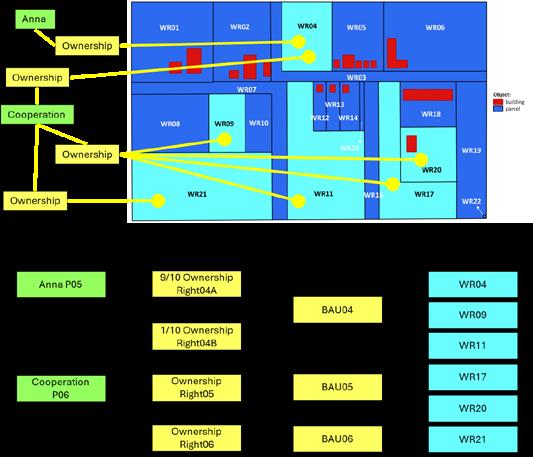
3: LADM instance diagram with a multi-party, multi-rights, multi-BAUnit, multi-SpatialUnit configuration.
record’s identifier. For readability, all entities from the Party package are shown in green, the Administrative package in yellow, and the SpatialUnit package in light blue. This diagram also corresponds to how records are stored in the database.
Multiple parties, multiple rights
In most cases, not only is there more than one spatial unit involved, but multiple parties might have multiple rights to the same or different spatial units. As illustrated in the LADM instance diagram below the map in Figure 3, Anna acquired the parcel registered as spatial unit WR04 with support of the cooperation. In their arrangement, the cooperation holds one tenth of the ownership rights in the property. This is recorded as a share on the right. The rights apply to the BAUnit. The cooperation has rights on two other BAUnits – BAU05 and BAU06 – which represent bundles of four spatial units and one spatial unit, respectively. This example shows the utility of the BAUnit. If the four spatial units would be recorded independently, then administrators would have to deal with four independent records whenever changes occurred. This approach would also create unnecessary redundancy and potential for data inconsistency.

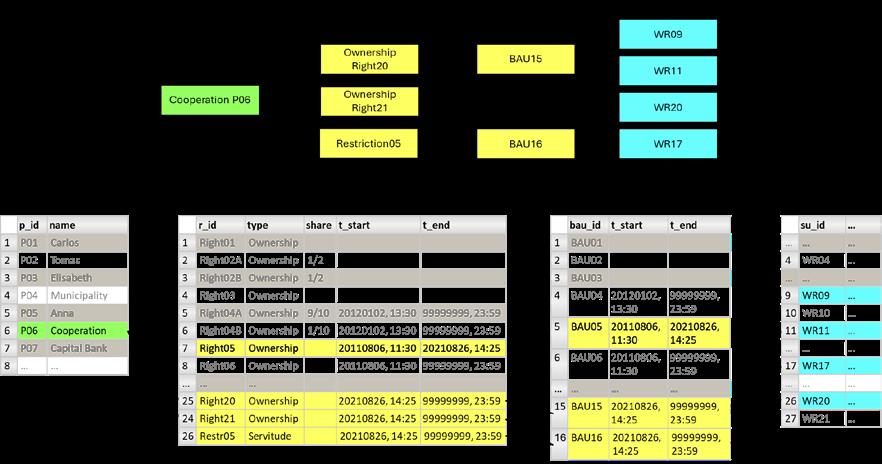
Thinking in terms of a database
Having a visual way to analyse how data in a land information system is organized in various scenarios is very useful for design purposes, but does not convey any information about how the data is actually stored. A record of a particular piece of information must identify the information uniquely and contain fields that hold values for its attributes. As an example, the record of a Party instance must hold its unique ID, with attributes such as name, age and address.
A simple database might be organized according to the LADM template ‘Party-RRRBAU-SpatialUnit’. In this case, the database would contain four tables (Figure 4) which include attributes on parties (p_id and name), rights (r_id, type, share, t_start, t_end), basic administrative units (bau_id, t_start, t_end) and spatial units (su_id, area and geometry, of which the last two are not shown in Figure 4). Each table represents a class in LADM.
A particular instance (rectangle) from the instance diagram will correspond to exactly one row in a table in the database. For example, the rows corresponding to the parties Anna P05 and Cooperation P06 are highlighted in green in the database’s Party table. Similarly, the rows in the other tables corresponding to the other instances from Figure 3 have been highlighted in their corresponding colours. Separating different LADM classes into separate tables means that changes can be made locally. Updating the name of a party after marriage should not involve changing a database row that contains rights information.
On the topic of changes to the database, land administration data is subject to change as parties transfer rights, or spatial units get transformed through subdivision or amalgamation, through changes in laws and regulations, etc. To manage such changes in LADM, an important feature is the inclusion of object versioning. In concrete terms, this is realized in the database by recording a timestamp with every record. There may be multiple timestamps, such as when a record was created and when the change legally took effect. For simplicity, the Waterriver cadastral database presented here as an example includes only one timestamp for the start time and end time of the record (e.g. when a right was realized and when it became obsolete).
Figure 5 shows the introduction of a restriction on spatial unit WR17. Compared
5: Database updates involving the mutation of records for RRRs and BAUnits without changes to other related records.
to Figures 3 and 4, several things have happened here. The old BAU05 has been replaced by BAU15 and BAU16, separating WR17 (the spatial unit on which the new restriction applies) from the other spatial units under BAU05. The new restriction, Restr05, is not associated with a particular party but is attached to BAU16. Two new ownership right records, Right20 and Right21, replace Right05.
In the database, the start time (t_start) of each new record equals the end time (t_end) of the records that it replaces. This type of record-keeping in the database ensures that historical records are maintained rather than being overwritten.
Before a database can be created with properly structured and properly linked tables, it is necessary to know what sorts

relationships
of data can be expected. LADM provides an out-of-the-box starting point based on its three main packages: Party, Administrative, and SpatialUnit. In UML, a package is collection of classes – model elements that represent concepts of interest in the application domain. Packages usually contain classes related to one aspect of the application. For example, the Party package contains the classes LA_Party, LA_GroupParty and LA_PartyMember (Figure 6).
A class is drawn as a rectangle with a name, usually prefixed by the package name as in Party::LA_Party, and optional sets of attributes, constraints and methods separated in different compartments. For example, the class LA_GroupParty has two attributes: groupID and type. Every attribute is suffixed with its data type. For example, the attribute type of LA_GroupParty has data type LA_GroupPartyType which is a codelist (an enumeration of predefined values). More details of the UML representation can be found in the LADM standard itself.
Mastering the LADM model requires studying the standard and applying the UML model in the design of land administration databases. The book LADM in the Classroom covers the most important concepts of the LADM in an accessible manner. The book comes with links to a GIS project including a dataset implementing the examples used in the book as well as slides which can used for teaching and professional illustration (see ‘Further reading’).
LADM in the Classroom simplifies course development especially for student groups that do not have prior UML knowledge. The recommended approach is to develop progressively complex exercises, starting with questions that require the student to create simple instance diagrams and adding more complex challenges as they progress through the book. By the end, the student should be able to illustrate a given scenario using an instance diagram, illustrate database updates, and identify modifications to the LADM classes to make them fit a particular land administration context.
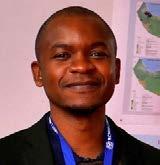



Further reading
Christiaan Lemmen, Malumbo Chipofya, Andre da Silva Mano, Abdullah Kara, Dennis Ushiña Huera, Peter van Oosterom, Eftychia Kalogianni, Eva-Maria Morscher-Unger, Javier Morales Guarin, Anthony Beck, Stephan Honer, Rohan Bennett, Paula Dijkstra and Jaap Zevenbergen (2025). LADM in the Classroom, FIG Publication, Extended Version of FIG Publication 84 (including The Land Administration Domain Model – An Overview, and LADM Edition II). International Federation of Surveyors (FIG), Copenhagen, Denmark.
https://www.fig.net/resources/publications/figpub/LADM_ extended/LADM_ITC_Book_ext-2025.pdf
https://www.fig.net/resources/publications/figpub/pub84/ figpub84.asp
Additional resources
https://ladm.itc.utwente.nl/ladm_classroom
https://stdm.gltn.net/
Malumbo Chipofya is an Assistant Professor of Land Informatics at the ITC and School for Land Administration Studies, University of Twente, the Netherlands, and a member of the STDM advisory board. His current research covers modelling customary land tenure systems from a knowledge representation perspective and applications in LIS.
Andre da Silva Mano is a lecturer on Geoinformatics at the Faculty of Geo-Information Science and Earth Observation, University of Twente, the Netherlands. He is an open-source GIS software enthusiast and has extensive experience in designing and implementing courses on GIS and spatial analysis using open tools.
Abdullah Kara has worked as a researcher at the Delft University of Technology, the Netherlands. He is the editor of the second edition of the LADM, and his research formed the basis of LADM Part 4 –Valuation Information. He is currently an assistant professor at Gebze Technical University, Turkey.
Christiaan Lemmen is Professor Emeritus of Land Information Modelling at the Faculty of GeoInformation Science and Earth Observation of the University of Twente in the Netherlands. He is editor and project leader for ISO/ TC211, developing parts 2, 4 and 5 of the ISO 19152 standard.
This article has given a broad but useable overview of LADM based on the first edition of the standard. Edition II has considerably more concepts and packages, explicitly defining concepts for all four functions of land administration, while maintaining the basic structure presented in this article, namely Party–RRR–BAUnit–SpatialUnit. A readily available application based on LADM is the Social Tenure Domain Model (STDM) software implementation. Interested readers are encouraged to explore the modelling tool in STDM to experiment with land rights modelling concepts.
By Ada Perello, EAASI
What began an experimental concept in the 1990s has evolved into a defining feature of urban development: the smart city. Across the globe, cities are embedding digital technologies into their infrastructure to improve efficiency, sustainability and the quality of urban life. This article explores how advances in aerial mapping have played a central role in enabling this transformation, and examines – through a series of case studies – how these technologies continue to shape smart cities today.
The early 2000s marked a breakthrough moment for the smart city, with the rise of airborne Lidar, high-resolution imagery and photogrammetry making it possible to create detailed 3D city models. These geospatial tools provided a foundation for integrating real-time data from a growing array of sensors, allowing urban environments to become increasingly data-rich and responsive.
Technological breakthroughs
The pace of smart city development accelerated significantly in the 2010s with the introduction of dense image matching (DIM) and simultaneous localization and mapping (SLAM). DIM allows for the generation of
detailed 3D models from overlapping images, while SLAM enables real-time positioning and mapping without GPS dependence. These technologies have facilitated the development of urban spatial digital twins: dynamic 3D city models that allow planners to simulate infrastructure changes and test disaster response scenarios before realworld implementation.
Since 2018, smart cities have further evolved through increased sensor integration, greater computational power and the deployment of 5G networks, enabling real-time processing and analysis of massive data volumes. Artificial intelligence (AI) plays a growing role in smart
cities, enabling predictive analytics for areas like traffic flow optimization, energy demand management and public safety incident prediction. Despite these advancements, there are persistent challenges related to data management, privacy and system interoperability. These often stem from the diverse formats and communication protocols of various urban sensors and systems.
Advantages of crewed aerial mapping
In smart cities, data comes from a diverse ecosystem of sources, each contributing to a comprehensive understanding of urban dynamics. Satellites provide large-scale, consistent coverage of entire regions, valuable
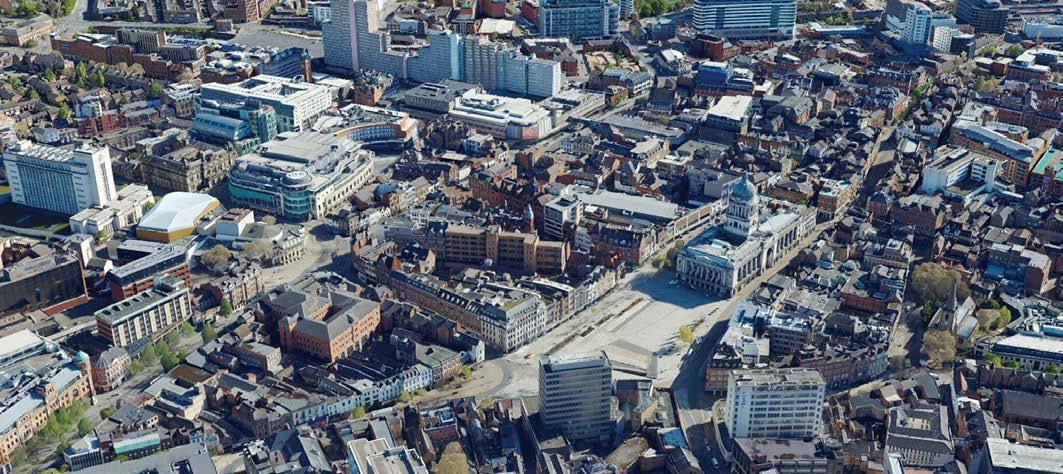
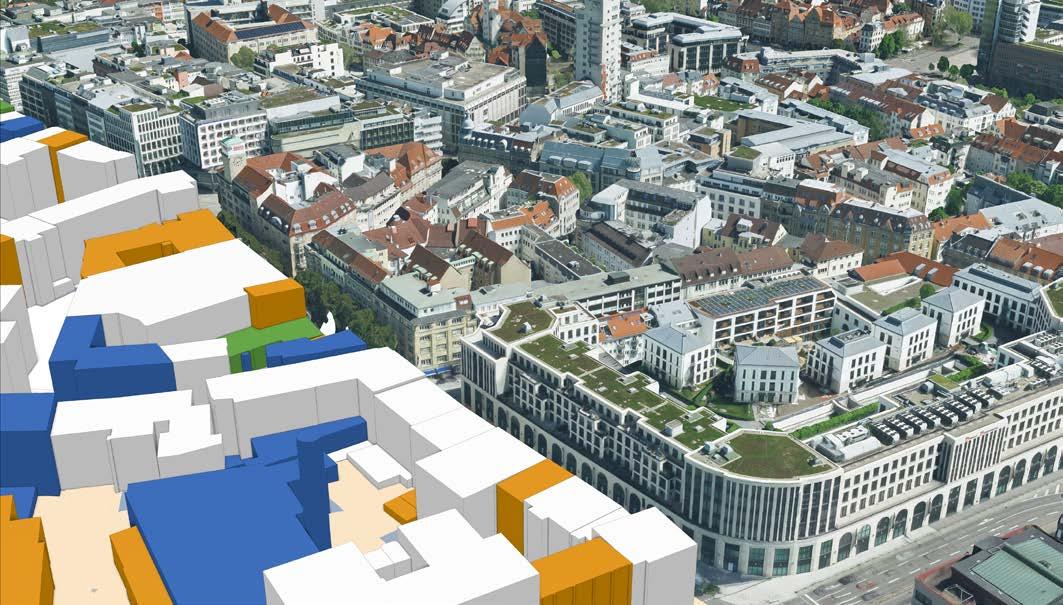
for monitoring environmental patterns and urban sprawl. Mobile mapping systems mounted on vehicles or handheld devices capture street-level detail, offering granular insights into road infrastructure, signage and pedestrian movement. Drones supply high-resolution imagery and real-time data for targeted monitoring and small-scale site inspections. Crewed aerial mapping, however, plays a vital complementary role by filling the gap between satellite and groundlevel data. Aircraft equipped with advanced sensors capture highresolution imagery and Lidar data across large urban areas in a single flight, delivering a level of detail and coverage that is difficult to achieve with other platforms.
The advantages of crewed aerial mapping extend beyond data acquisition. Aerial surveys provide large-area consistency and vertical accuracy that is critical for creating reliable 3D city models. The use of large-format cameras captures extensive areas in a single frame, enhancing efficiency, while the integration of oblique sensors allows for the capture of vertical facade information, crucial for detailed urban modelling. The ability to operate at higher altitudes and with fewer airspace restrictions than drones allows aircraft to cover complex urban landscapes and critical infrastructure zones more effectively. Furthermore, the emergence of hybrid sensor systems, combining Lidar and imagery acquisition in a single pass, maximizes data richness and reduces operational costs and time. The combination of this rich aerial data with satellite and groundbased inputs creates a more complete geospatial picture, significantly improving decision-making and resource allocation in smart cities.
While the technological foundations of smart cities are impressive, their true value emerges when applied to solve real urban challenges.
Across Europe, numerous cities are leveraging aerial mapping data to develop innovative solutions for climate resilience, environmental management and urban planning. Members of the European Association of Aerial Surveying Industries (EAASI) are not only involved in capturing this data, but also play a key role in processing and analysing it. High-density Lidar point clouds and photogrammetry data are processed using advanced software and algorithms to create detailed 3D city models, orthophotos and classified datasets. This expertise allows city planners to simulate future scenarios, optimize infrastructure maintenance and monitor environmental trends with greater accuracy. The ability of aerial mapping companies to combine data acquisition with processing ensures that smart cities are built on accurate, actionable insights.
Nottingham City Council in the UK has taken a major step towards smarter urban management by developing a detailed digital twin of the city. This initiative integrates high-resolution aerial data with advanced 3D modelling to create an interactive platform that enhances city planning, public engagement and environmental management. The project leverages cutting-edge airborne mapping technology to provide accurate, comprehensive geospatial insights.
Nottingham City Council recruited the expertise of Bluesky International, an aerial survey company that is utilizing Leica Geosystems’ airborne solutions. Through this partnership between two EAASI companies, the council has developed a digital twin of the entire city – establishing Nottingham as a pioneer in digitally advanced city planning.
A key goal for Nottingham City Council was to create a platform accessible to multiple departments, ensuring that the digital twin
could support a broad range of urban planning and infrastructure management needs. The platform enables planners to drop proposed 3D building models into the digital twin and link them to relevant planning documents, such as permissions and proposals. Tools embedded within the digital twin, including line-of-sight analysis, shadow assessment and measurement, allow planners to assess the potential impact of new developments more efficiently. This integrated approach has accelerated decision-making and increased confidence that proposed developments align with the existing urban fabric.
The foundation of the digital twin was laid through an advanced aerial survey conducted by Bluesky International using the Leica CityMapper-2 by Hexagon, a hybrid urban mapping sensor capable of capturing both vertical and oblique imagery alongside highpoint-density Lidar. This approach enables the creation of a highly detailed 3D model incorporating building facades, road networks and vegetation with remarkable accuracy. The ability to collect multiple datasets in a single flight reduced costs and carbon emissions while increasing the speed and consistency of data acquisition.
Developed using the innovative MetroVista 3D mesh model product from UK Bluesky International, the new tool will ensure accurate data is driving decision-making in a bid to offer transparency and increased engagement with the planning process. The combination of detailed point cloud data and immersive MetroVista mesh models has enhanced the city’s ability to monitor urban growth, assess environmental changes and improve transport infrastructure.
The data was processed using a streamlined workflow, producing orthophotos, classified point clouds and detailed 3D mesh models. Nottingham City Council integrated this data into an online interactive tool, allowing urban planners and decision-makers to visualize development scenarios, conduct environmental assessments and evaluate infrastructure projects with greater precision. The platform also supports public engagement by enabling citizens to explore and understand the impact of urban changes.
Nottingham’s success in creating a multifunctional digital twin demonstrates

In the design phase, OPEGIEKA developed a blue-green infrastructure concept that included strategic locations for new parks, rain gardens, water retention reservoirs and green corridors. (Image courtesy: OPEGIEKA)
how aerial surveying and advanced geospatial data processing can support more transparent, efficient and sustainable urban planning.
Stuttgart, Germany’s sixth largest city, has made significant strides towards becoming a smart city by developing a highly detailed digital twin, enabled by advanced aerial surveying and photogrammetry. The project aims to improve urban planning, mobility and environmental sustainability by integrating high-resolution 3D data into decision-making processes.
GeoFly GmbH, a leading aerial mapping company, was tasked with acquiring the imagery necessary to build Stuttgart’s digital twin. Using a Vexcel Osprey 4.1 sensor mounted on a Diamond DA62 MPP aircraft, GeoFly conducted a meticulously planned aerial survey. The Osprey 4.1 sensor captured both nadir and oblique imagery at a ground sampling distance (GSD) of 7cm for the entire city and 4cm for the city centre, ensuring high-resolution coverage. The sensor’s advanced motion compensation capabilities allowed for precise data capture even over Stuttgart’s basin-like topography. GeoFly collected an impressive 69,760 images, producing approximately 40 terabytes of data and 12.5 terapixels of imagery. The nadir images alone covered 1,152km² over 2,330km of flight distance, completed in four
separate flying days to account for weather and lighting conditions.
The aerial data was processed using ArcGIS Reality Studio to create a complete set of geospatial products, including a digital surface model (DSM), true ortho imagery, point clouds and a detailed 3D mesh of Stuttgart. The alignment process incorporated 23 ground control points and checkpoints, with the software’s automatic control point measurement feature streamlining this complex task. Once processed, the resulting 3D mesh was integrated into Stuttgart’s geoinformation system, making it accessible across city departments and public-facing platforms.
Serving as a platform for integrating realtime sensor data, the digital twin is already informing urban development decisions and improving public engagement by visualizing future infrastructure projects. With diverse applications such as shadow analysis, solar potential mapping and urban heat island monitoring, the detailed 3D model also supports applications in mobility and environmental management. Stuttgart’s model demonstrates how advanced aerial surveying can drive more responsive, datainformed urban planning.
Case study 3: blue-green infrastructure development
Another compelling example comes from Stalowa Wola, an industrial city in southeastern Poland facing significant environmental challenges, including flooding, urban heat islands, air pollution and limited green spaces. The city needed to enhance its resilience and adaptive capacity to climate change while improving the quality of life for residents. OPEGIEKA, an EAASI company based in Poland, developed a comprehensive blue-green infrastructure concept using aerial mapping as its foundation.
The project followed a three-phase approach of inventory, analysis and design. In the inventory phase, OPEGIEKA created a detailed green spaces database through photointerpretation of high-resolution aerial and satellite imagery. This provided a precise baseline understanding of the city’s existing green assets and impervious surfaces.
The analysis phase leveraged this aerial data to perform sophisticated remote sensing
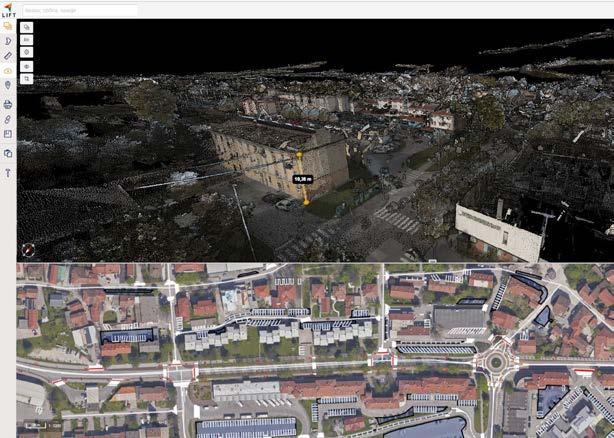
analysis, including rainfall and runoff simulations to identify flood-prone areas, urban heat island and hotspot detection to pinpoint temperature anomalies, accessibility mapping of green areas, impermeable surfaces detection, ventilation corridor analysis, and tree crown segmentation. Such extensive analysis would have been impossible without the comprehensive, accurate data provided by aerial surveys.
In the design phase, OPEGIEKA developed a blue-green infrastructure concept that included strategic locations for new parks, rain gardens, water retention reservoirs and green corridors. The plan also established evidence-based rules for managing urban greenery, all derived from the insights gained through aerial data analysis.
The final results were delivered in a comprehensive report containing maps, findings, recommendations and performance indicators. City officials and stakeholders received the analysis through workshops and online presentations, providing a scientific foundation for future urban planning decisions. This project exemplifies how aerial mapping data extends far beyond simple visualization, also enabling sophisticated modelling and simulations that drive real urban improvements.
The Municipality of Ajdovščina in Slovenia is taking a comprehensive approach to smart city development by integrating aerial and terrestrial geospatial data into a centralized infrastructure management platform. The project, supported by Flycom Technologies, combines data from Lidar, classical and true orthophotos, a 3D mesh of the city centre, traffic sensors and road condition assessments to enhance urban mobility, infrastructure maintenance and emergency response capabilities. This initiative reflects how smart cities are increasingly leveraging multi-source data to improve decision-making and operational efficiency.
Flycom Technologies conducted airborne Lidar with imagery capture surveys over Ajdovščina, along with terrestrial capture. Data from the airborne dataset was integrated into a centralized platform alongside

Ada Perello is the communications manager at the European Association of Aerial Surveying Industries (EAASI), which was established in 2019 to unite companies generating geographic data from crewed aerial platforms and has experienced rapid growth ever since. Prior to joining EAASI, Perello worked in external communications for organizations like IMO, FAO and the private sector. She holds a master’s degree in Journalism and International Business Administration.
terrestrial Lidar and photographic surveys. The airborne survey captured high-resolution data on street layouts, road surfaces and infrastructure components, creating a detailed 3D urban model.
By consolidating aerial and ground-based datasets, the municipality gained a more comprehensive view of its infrastructure. Traffic sensors and road damage mapping were added to monitor traffic flow and identify maintenance needs. This integration enables city planners to optimize traffic patterns, schedule road repairs proactively and improve overall transportation efficiency. Emergency services, including fire and medical response teams, benefit from enhanced situational awareness, such as understanding street widths, bridge load capacities and optimal emergency routes.
The integration of aerial and terrestrial data into a single platform allows municipalities to manage infrastructure more effectively. In Ajdovščina, the centralized system supports better resource allocation, faster response times for repairs and enhanced public safety. The ability to combine multiple data streams – from aerial imagery and Lidar to real-time traffic monitoring – creates a dynamic, responsive urban management framework.
Flycom’s contribution illustrates how aerial mapping companies are involved not only in capturing high-resolution data, but also in processing and integrating it into smart city platforms. Their technical expertise in combining diverse datasets strengthens the analytical capabilities of municipal administrations, enabling data-driven decision-making that enhances urban sustainability and resilience.
As smart cities continue to grow in complexity, the demand for reliable, high-quality geospatial data will only increase. Crewed aerial surveying platforms, with their ability to capture detailed data quickly and accurately, will remain at the forefront of this technological evolution. By combining advanced sensors, machine learning and real-time processing capabilities, crewed aerial mapping will continue to drive innovation in urban planning and smart city development, ensuring that cities are more efficient, more resilient and more sustainable in the years to come.

Boost efficiency and data reliability with cloud‑enabled survey workflows
Disconnected data creates costly delays, rework and miscommunication. When field data is lost or incomplete, confidence erodes, and efficiency suffers.
Trimble® cloud-enabled survey workflows transform how teams operate. GNSS and total station data sync securely between field and office, enabling timely updates, seamless collaboration and full data traceability. Projects move faster, and decisions are based on the most current information—every time.

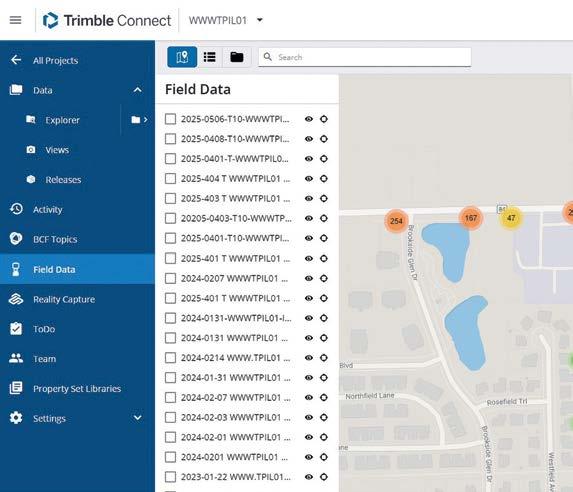
The Santiago Urban Dataset is a reliable benchmark
By Silvia María González-Collazo, Jesús Balado and Elena González, Spain
The Santiago Urban Dataset (SUD) is a new, composite dataset merging handheld mobile laser scanning (HMLS) and mobile laser scanning (MLS) point clouds. With eight distinct classes, it has been developed using data fusion techniques to effectively handle occlusions from parked vehicles and street furniture. Evaluation of SUD shows that it is well-suited for comparative assessments of new deep learning models targeting semantic segmentation tasks, significantly extending its potential applications.
Point cloud data is widely used in urban applications for object detection and classification, with deep learning methods as the state-of-the-art approach. MLS captures large datasets efficiently, but frequently contains occlusions – particularly from parked vehicles, limiting insights into pedestrian urban environments. SUD overcomes this limitation by correcting occlusions by combining point clouds from MLS and HMLS (Figure 1).
Comparison to existing datasets
SUD is a comprehensive real-world dataset covering 2km of streets in Santiago de Compostela, Spain. The dataset undergoes a meticulous manual labelling process, supported by heuristic techniques and deep learning methods.
While some datasets only differentiate between road and sidewalk, SUD goes further by classifying occlusion-free sidewalks, roads and kerbs. Additionally, it incorporates other key classes relevant to urban mobility:
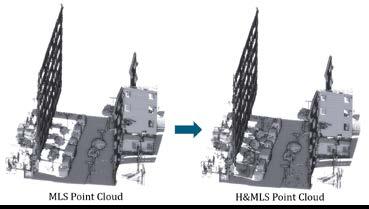

buildings, vehicles, vegetation, poles and others. This results in a dataset with eight specific classes. Table 1 compares the characteristics of some of the 3D point clouds datasets, sorted chronologically, available in outdoor environments.
Equipment
Point clouds were obtained with a mobile laser scanner and a handheld mobile laser scanner. A RIEGL VUX-1HA MLS scanner was used to acquire the point clouds from a car perspective, while the HMLS ZEB-GO scanner
was used to scan the urban environment from a pedestrian perspective. Table 2 shows the technical characteristics of the RIEGL VUX-1HA and ZEB-GO systems.
Scanned area
The survey was conducted in Santiago de Compostela (Spain). The dataset contains 14 segments of six urban streets. Each segment measures approximately 200m. Therefore, the dataset is formed by 1.6km of MLS point clouds and 2km of HMLS point clouds of urban streets (Figure 2).
SynthCity Synthetic Yes No
9 Blender 3D graphics software
Toronto-3D Real Yes Yes 1,000m 78M 9 MLS Teledyne Optech Maverick
TUM-MLS-2016 Real No Yes
Paris-CARLA-3D Synthetic + Real Yes Yes (Synthetic) No (Real)
SUD Real No Yes (MLS) No (HMLS)
1: Comparison of urban point cloud datasets.
(MLS)
Field of view (vertical/horizontal) 360º full circle 270º/360º
9 Velodyne HDL-64E Lidar
+ 60M 23 CARLA Simulator + Lidar Velodyne HDL32
8 MLS Riegl VUX-1HA + HMLS ZEB-GO
manually separated, and HMLS ground points were classified using KNN with manual corrections. Pole-like elements were extracted from the others class using DBSCAN and height/width filters, with KNN applied for HMLS classification and additional corrections (see the workflow for labelling MLS and HMLS point clouds in Figure 3). Ultimately, both MLS and HMLS data were classified into eight classes: road, sidewalk, kerb, building, vehicles, vegetation, pole-like elements, and others (Figure 4).
Manual labelling was conducted with CloudCompare, which was combined with automatic processes to reduce the human effort. The following rules were established to obtain uniform and consistent labelling:
• All the points behind the facade line were considered as building points, including flooring of entrances, doors, shop windows, etc.
• Only stationary cars and vans were considered as vehicles.
• Motorbikes, large trucks or any vehicles in motion were classified as others.
• Any element in the ground space that was neither trees nor stationary cars/trucks was classified as others.
First, 200m of MLS point cloud data was manually labelled into five classes (ground, building, vehicles, vegetation, and others) to train PointNet++ for preliminary classification of the remaining data. A k-Nearest Neighbors (KNN) algorithm was then applied to label HMLS data based on proximity to MLS data, followed by manual corrections to address misclassifications. Ground points were further divided into road, sidewalk and curb using an algorithm that analyzed inclination, curvature, and clustering (DBSCAN). Horizontal ground elements were
As a baseline approach, a PointNet++ model was tested on the proposed dataset. Given the existence of two classified data sources, three tests (and thus three training sessions) were performed: one with only MLS point clouds, another with only HMLS point clouds and a third using both MLS and HMLS point clouds (Figure 5). To assess the performance of the model in each case, several metrics were employed (see Table 3 data).
The behaviour of PointNet++ in the predictions was as expected. The best identified classes were those corresponding to the largest number of points and distinctive geometries (road, sidewalk, buildings, vehicles, and vegetation). It is also worth noting that the classification with MLS data was better than with HMLS, which
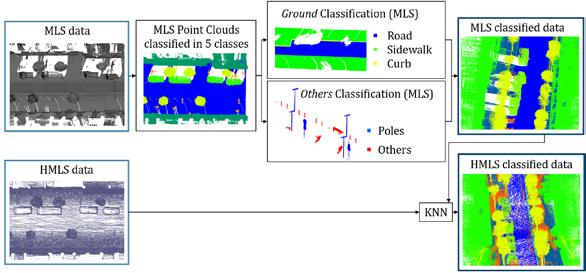


may be explained by the lower quality of the HMLS point cloud. On the other hand, the union of MLS and HMLS did not improve the classification but avoided occlusions in sidewalks.
Conclusion
This study introduced a new urban point cloud dataset known as the Santiago Urban Dataset. SUD was labelled with eight distinct classes: road, sidewalk, kerb, buildings, vehicles, vegetation, poles, and a



Silvia María González-Collazo holds a PhD in Geotechnologies Applied to Construction, Energy and Industry. Until recently, she worked at the University of Vigo, where her research focused on 3D point clouds – from acquisition to processing – with applications in mobility and safety within urban environments. She is currently employed as a data scientist at Kelea.
Jesús Balado-Frías is a Ramon-yCajal researcher at the University of Vigo. He specializes in 3D point clouds, from acquisition to processing and visualization, in the fields of urban mobility and modelling.
Elena González is a full professor at the University of Vigo. Her research interests are texture analysis, pattern classification, segmentation and colorimetry, in images and in 3D point clouds.
category denoted as others. Notably, SUD is a composite dataset, merging HMLS and MLS point clouds. One of the key advancements achieved in this work was the utilization of data fusion techniques to effectively handle occlusions introduced by parked vehicles and street furniture.
The PointNet++ model was selected as a baseline approach for evaluation, and several pertinent metrics were introduced to assess its performance. The outcomes of this evaluation were notably consistent with those observed in other state-of-the-art works. Both the quantity and spatial distribution of errors align with established benchmarks, affirming that the SUD dataset is wellsuited for comparative assessments of new deep learning models targeting semantic segmentation tasks. Beyond its applicability in model comparisons, the broad scope of the survey – coupled with the integration of HMLS and MLS data – significantly extends the potential applications of SUD. This dataset can serve as a valuable resource for urban mobility or urban planning studies. In the future, the authors will test other deep learning models on the dataset as well as new architectures. Different frameworks to integrate and fuse HMLS data into MLS data will also be studied.
Geoinformation underpins decision-making in urban planning, traffic and energy infrastructure, disaster prevention and environmental protection. Global challenges such as climate change, resource security and rapid urbanization demand reliable geospatial data, while advances in AI, cloud computing and autonomous systems unlock new possibilities for its collection and use.
The subsea domain contributes an essential dimension to geoinformation. This is where EvoLogics brings in 25 years of innovation in underwater communication, positioning and robotics. The company is integrating these technologies into a new generation of uncrewed underwater vehicles (UUVs) and uncrewed surface vehicles (USVs) capable of intelligent, cooperative missions – a networked task force for automated data collection, where surface and subsea vehicles operate as an integrated team.
The Sonobot 5: compact, capable and connected
The EvoLogics Sonobot 5 uncrewed surface vehicle is a foldable twin-hull catamaran designed for autonomous hydrographic and inspection missions in inland and coastal waters. Lightweight, portable and easy to deploy, it delivers professional-grade data collection with minimal logistic effort.
Its modular payload architecture supports high-precision GNSS, multiple sonar options (single-beam, multibeam, sidescan, forward-looking) and various visual sensors, including stereo and thermal cameras. Toolfree assembly, intuitive mission-planning
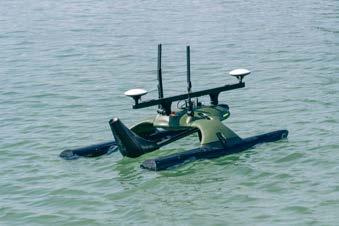
software and up to nine hours of endurance make it a flexible platform for bathymetry, environmental surveys and infrastructure inspections.
An optional USBL antenna mounted on a retractable arm transforms the Sonobot 5 into a mobile acoustic node for underwater positioning and communication. This integration enables the USV to exchange acoustic signals with underwater vehicles, providing them with GNSS corrections and serving as a data relay to the operator station onshore.
The Quadroin AUV: bionic design for efficient subsea surveys Below the surface, the EvoLogics Quadroin autonomous underwater vehicle (AUV) delivers efficient and detailed underwater imaging. Inspired by the hydrodynamics of penguins, its spindle-shaped hull minimizes drag and enables speeds of up to 10 knots while maintaining low energy consumption for long, data-intensive missions.

Equipped with sidescan sonar, a downward-looking full-HD camera and an AI-based object recognition module, the Quadroin performs sidescan sonar mapping and detection of submerged assets. It operates autonomously along pre-programmed waypoint grids, using inertial navigation enhanced by USBL/ LBL acoustic positioning fixes and periodic GNSS locks from acoustic surface gateways.
The AI system onboard the Quadroin processes sonar and video feeds in real time, classifying objects and relaying detection information to the surface for immediate evaluation.
Where these two systems truly stand out is in their ability to cooperate as a networked team. Acting as a mobile surface gateway, a Sonobot 5 equipped with USBL tracks and communicates with a submerged Quadroin over the acoustic link.
The Sonobot provides GNSS-referenced acoustic positioning fixes, relays mission status updates to the operator and ensures continuous data flow between the underwater vehicle and the control station. Its mobility allows it to follow the AUV along its route, maintaining optimal acoustic geometry and extending the operational range beyond what stationary surface buoys can cover.
The same acoustic network can also connect EvoLogics’ Diver Communication System units. Divers in the field can receive mission updates, including object detections from the Quadroin’s onboard AI, directly through their underwater displays. This enables supervisors to guide divers toward the discoveries for on-site inspection– integrating human expertise into the autonomous workflow.
This synergy effectively merges hydrography, navigation and communication into a single adaptive system:
• The Quadroin AUV collects sidescan sonar and visual data
• The Sonobot 5 USV handles positioning, navigation assistance and data relay at the surface
• The divers receive updates and guidance through the shared acoustic network
• The shore control station maintains situational awareness through continuous surface-to-shore communication
For complex missions, multiple Sonobots and stationary USBL buoys can be combined into a hybrid surface gateway network, covering larger areas and enhancing acoustic positioning accuracy. The result is a scalable, multi-vehicle system that links AUVs, USVs and divers into a coordinated operational framework.
This integrated approach unlocks new possibilities across several sectors:
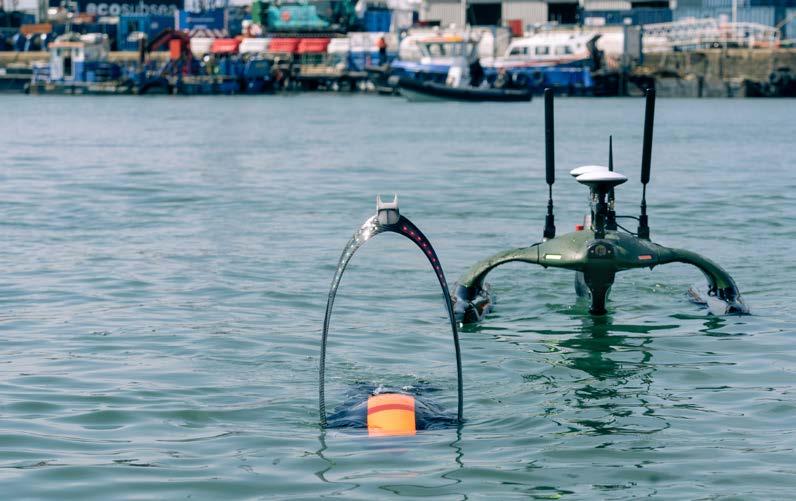

• Hydrography: High-resolution seabed mapping with coordinated data collection from the surface and underwater vehicles
• Infrastructure inspection: Combined sonar and camera surveys for bridges, pipelines and offshore installations
• Environmental monitoring: Collaborative mapping of habitats, sediment transport and pollution
• Search and recovery: Real-time detection and localization of objects using the AUV’s onboard AI and the USV’s surface communications link, supported by divers for on-site verification
• Scientific research: Multi-vehicle sampling and observation networks for oceanographic and ecological studies
By uniting autonomous vehicles that communicate acoustically, EvoLogics develops a practical framework for hybrid subsea operations – where robots and humans share a connected data environment.
Connecting the Sonobot 5, Quadroin and Diver Communication System exemplifies EvoLogics’ vision for the next generation of subsea platforms: autonomous, connected, collaborative and scalable. Working together, they bridge the surface, subsea and human domains, enabling continuous data exchange, accurate navigation and real-time mission awareness.
EvoLogics continues to evolve these technologies for cooperative, data-driven operations – the subsea networks reshaping how data is gathered, processed and shared.

GIM International interviews Pete Kelsey
By Wim van Wegen, GIM International
Few people have pushed the boundaries of spatial data, reality capture and 3D storytelling quite like Pete Kelsey. Throughout his career, he has helped archaeologists, engineers, documentary makers and public agencies bring to life invisible worlds, from shipwrecks to historic sites like Alcatraz. Kelsey translates these complex environments into compelling narratives because he believes great stories change minds, and spatial data is what makes those stories real. In this interview held at Intergeo, he effortlessly jumps from lunar coordinate systems and emerging trends like Gaussian splatting to cautionary tales of reckless drone flights, and reminds us that the real magic happens when the industry’s ‘cool tech’ is used to convey a story worth retelling.
You’ve described yourself as a “spatial storyteller”. What does that mean to you, and how has that perspective shaped your professional approach?
I discovered 20 years ago that, for me, reality data is the most valuable data type of all, because there’s no better medium for providing context. It transcends language. If we didn’t speak the same language, I could show you a model, and you’d say “I get it. That’s my home. That’s my town”. That led to my natural evolution into storytelling. It changed many conversations from “Here is the design, here is the data,” to “Come with us, put on the goggles, we’re going to go in there together”. It’s literally when my professional life changed from black and white to colour.
You’ve worked across archaeology, engineering and entertainment. These fields don’t often overlap, so what connects these worlds in your work?
What all of these domains have in common is a story – and stories are what change minds. If I’m an engineer and you’re the client, I’m really sharing a narrative that I hope you’ll connect with emotionally. You should walk away thinking “I like this, I understand it, I believe in it”. That’s the common denominator - or connective tissue – at the highest level.
Moreover, people don’t want raw data; they want solutions. At events like Intergeo, the reality is that most people don’t care about the hardware or software itself, they care about what it allows them to do. And the senior decision-makers will ask a simpler question: “Is this good for us or not?”. I learned early in my career that a product is only one piece of a larger answer. On the complex, high-profile projects I’ve worked on, it has never been one vendor or one tool; it’s a combination. The engineering challenge is understanding the problem and assembling the right mix. I believe audiences grow when companies focus on being part of a solution, not just selling a product. That’s why I prefer a more strategic approach. Instead of a traditional sales pitch, come with me to a site – like Alcatraz – and I’ll show you the real-world impact.
In the documentary series Drain the Oceans, you helped visualize shipwrecks and underwater landscapes that had never been seen before. What was the biggest challenges in turning invisible seafloors into compelling visual stories? Well, the marine environment is incredibly challenging. All sensors behave completely differently. Photogrammetry above the water is challenging enough, but photogrammetry underwater is a completely different animal. Turbidity in the water creates shadows. Underwater lighting can help, but if the shadows aren’t consistent, the model is going to look bad.
When working on the wreck of the Arizona at Pearl Harbor about ten years ago, we were using an underwater Lidar system designed for oil and gas infrastructure at great depth. The unit was enormous – about 300 pounds (approx. 135kg, Ed.) – so as a diver, trying to maintain buoyancy while moving it with lift bags, all without damaging the Arizona, was no small task. On top of that, we needed an extremely powerful laser for underwater operations, which made it genuinely dangerous; direct exposure could blind you.
Despite the time limitations, depth limitations and challenging weather conditions, the rewards can be spectacular – like the recent photogrammetry mesh of the Titanic, or images of Shackleton’s Endurance, which some friends of mine worked on. I’m still upset I didn’t get asked to go along on that one! The fidelity is unbelievable and, as I said earlier, it allows us to bring these wrecks to life for people. They can even be afraid of water – as long as they’re not afraid of VR headsets!
In Wyoming’s Jackson Hole, you led a project that used drones and beta mapping software to create a detailed 3D model of a steep backcountry snowboarding course for Red Bull’s Natural Selection Tour. What did that experience teach you about the evolving limits of drone mapping in extreme environments? When I did that, it was before terrain-following flight planning software was available, so I flew that with my thumbs. It was irresponsible but it worked, because it’s a one-to-one slope. I’m trying to keep it above the trees and the rocks, while a friend right next to me – with better eyesight – was calling things out. To be honest, it was reckless, but we got very lucky; we were successful in the model. It was called the Natural Selection Tour because the athletes could select their route down the mountain based on our data. That was at altitude just before it started snowing, so the drones behaved differently. I remember the mesh. If you haven’t seen the video, the mesh is quite good!
You were among the first to test Esri’s Terrain Follow feature in a live commercial project. How did that moment of real-time experimentation shape your view of innovation in geospatial technology?
I realized that flying in extreme terrain no longer had to feel risky. The real question becomes: how reliable is it? As long as you trust the underlying terrain data, you can simply monitor the flight. Everyone assumes you’re a brilliant pilot, while in reality, it’s the data doing the work!
On one project, we first flew a small drone to capture photogrammetry and generate a DSM (digital surface model, Ed.)
We then used that DSM in the flight plan for a larger drone carrying Lidar, and it worked perfectly. In that moment, I understood how this capability would change my service offerings. Once you have done it successfully, you know how to repeat it, and it becomes surprisingly straightforward. And even a short head start like that can give you a real advantage over other service providers.
Many of your projects bridge scientific accuracy and emotional storytelling. How do you find the right balance between data precision and narrative impact?
At this stage in my career, I look for passion projects. I chase a good story first – that’s the number-one criterion. Based on my past experience, nine out of ten clients do not understand the long-term value of geospatial data. So when I find a great story, I will say “Tell me about your existing spatial assets,” and nine times out of ten the client will reply “What? Spatial what?”. That happened on Alcatraz. So we start from zero. Then I will squeeze all the accuracy and precision out of the time and budget allowed, because I know this data will have a lifespan that will far outlive me.
Over the years, I have grown pretty adept at educating clients on the value of spatial data. I remind them that environments are dynamic, affected by geology, time, the elements. I say: “Do you agree your site will change over time? Yes? Then let us establish a baseline, a single source of truth that future surveys can be measured against for change detection purposes.” “You can do that?” they reply. “Yes, we can, and we have to,” I say.
In my opinion, no one should be capturing data that isn’t spatial, because you cut the life cycle of that data by 80%. In time, it becomes a pretty picture that you can do some interesting things with, but you are selling yourself short. So that’s my advice for all your readers!
You’ve introduced geospatial technology to mainstream audiences through television and documentary projects. How important is that outreach in showing the wider world what our field is capable of?
To me, it is everything! It’s one thing to create a beautiful model with a short life cycle, but how about a model that can live forever? I was talking with some of the Alcatraz team this week – our fingerprints are on that data permanently. That’s why, as I mentioned, if it’s not geospatial, it doesn’t matter to me. That is one part of the message. The other part is that this industry is exploding, yet there is a real shortage of talent. It’s one of our biggest challenges. I am ageing out of this – I have been doing it for 30 years – so when I can, I go into schools and say “Come with us. Let me show you how this works, because you’re going to think it is pretty cool”.
There is a bit of evangelism in that. I never had children of my own, so what is my legacy? Well, we need more people in this field. And the reality capture industry is fun – you get to fly drones and use amazing technology, lots of gadgets. The ‘wow factor’ is addictive. And when a young person is impressed by something you’ve done, you can say “I can show you how to do it”.
We should ask ourselves what the industry can do to attract the younger generation, perhaps even at the school level: internships, free software, outreach. Many large vendors already offer free tools if you have an email address ending in .edu, and I love that. Hardware is trickier because it is expensive,

As the owner of VCTO Labs, he helps filmmakers and other creatives bring stories to life through cutting-edge 3D and geospatial technologies.
but it would still be a smart investment for everyone in this space. Create your future customers. Go into a school, take drones and scanners, and evangelize.
The geospatial sector – and especially the field of reality capture – is evolving rapidly. Where do you see the most exciting developments happening, and how might they redefine what’s possible in the next few years?
Well, in the last 24 hours here at Intergeo, I’ve discovered that I can no longer dismiss Gaussian splats. As a geospatial guy, I’ve always thought they are beautiful. The datasets are spectacular. But there has been one problem: they are not spatial, and they are not measurable. But who better than Esri – who helped with the photogrammetry for Alcatraz and did a beautiful job – to recognize that limitation and say, “We’re going to fix that”.
The ‘aha’ moment for me came when I saw my friend Jeremiah from Esri at their
booth, and he said, “Hey, I want to show you something”. Esri has clearly doubled down on reality capture, and he showed me a splat of a city and it was stunning. He knows me well, so he said, “Watch this”, picked a point, and showed northern/easting, elevation, the description, and then started measuring distances. I just looked at it and thought “Alright, I cannot ignore this anymore”. So going forward, I will be paying very close attention to Gaussian splatting as it evolves. It’s time for this old dog to learn some new tricks!
The acid tests, of course, are land surveyors and civil engineers – and that is where I come from. If they start saying it is good, then it’s good. And based on what I saw, I think that is coming in the very near term. Besides that, I have probably seen 30 or 40 handheld Lidar systems here (at Intergeo, Ed.), and many now have RTK receivers on board. That has been important in my own evolution; it adds credibility and creates a unique service offering for clients.
What do you see as your main personal drive – the motivation that keeps you exploring, experimenting and telling stories through data?
Well, as I have said, I love a good story. That is number one. But I also love a challenge. If a project does not have an immediately obvious solution, I lean into that. I guess it’s in my DNA. But I don’t do any of these things alone. It’s about putting teams together – with people smarter than I am – and solving a problem that others said would never work. It takes a village to solve some of these problems. Fortunately, after 30 years, I’m surrounded by the right people.
And I know it can have a positive impact, even greater than what we did at Alcatraz. No one had tried that combination before: SLAM Lidar, terrestrial laser scanning, drone-based Lidar, photogrammetry, multispectral imaging. It felt like witchcraft, but we figured it out. That feeling, as golfers say, is like sinking a long putt. It’s what keeps you coming back.
After years of capturing the world’s most challenging environments, what continues to fuel your curiosity? And where do you see the next frontier for spatial storytelling? I have done maritime, terrestrial and underground work, but I think the next great environment will be extraterrestrial. This speaks for itself in terms of the investment required. Elon Musk, Blue Origin, Bezos – these are people who will ask the right question: do we have spatial data of the Moon or Mars? And if the answer is no, they would be out of their minds to even try to go there, let alone build anything or choose the right location.
But some friends of mine are already working on this. They are actively modelling both Moon and Mars missions. So, a coordinate system for the Moon? Yes. Wow. Figuring all of that out also touches on classic AEC (architecture, engineering and construction, Ed.) workflows, which is my background.
We have had fascinating conversations about the fact that we cannot possibly transport all the building materials to another world – it is simply too expensive. So we will need to do what we have always done: look for caves. Then you only have to build one wall and one door. Send up Lidar drones and robots to survey those caves, model them all and then make an informed decision about which one is best for the mission.
The first major project I myself ever did was on Easter Island – which is almost cheating, because every kid knows the famous heads. I scanned them, intentionally, because if you start with subject matter like that, people will pay attention. And because we created a single source of truth, we can go back. Those scans were done 18 years ago. Now, we’re talking about scanning them again, measuring erosion rates for change detection. This brings us back to what I said: lead with a great story. But beneath all of it are real problems we can solve: elevation which is a classic AEC concept, sea-level rise at Alcatraz, or where could we build a habitat on Mars. At the centre of it all is spatial data.
To finish this interview, I’d like to ask you about Alcatraz. What are the main lessons you learned from that project? I learned that not having a box to think outside of is not as scary as I once thought. If you surround yourself with very capable,

Pete Kelsey has spent his career championing digital preservation and pushing the boundaries of the geospatial and AEC industries. Above all, he is a geospatial storyteller and one of the field’s foremost evangelists, known for his sharp vision of what the ultimate reality capture toolkit should be. With a background in civil engineering, land surveying and remote sensing technology, Kelsey has led strategic projects around the world documenting historic, cultural and archaeological sites and artifacts. As the owner of VCTO Labs, he helps filmmakers and other creatives bring stories to life through cutting-edge 3D and geospatial technologies. Kelsey’s work has provided photorealistic, survey-grade data that lends accuracy and depth to documentary series such as Drain the Oceans and Buried Secrets of World War II
very smart people, the problems start to fall away. Personally, it’s affirming.
Everybody has heard of Alcatraz. That choice was very deliberate. I had done a lot of work with the National Park Service in the US because they have such great content and such great stories. But Alcatraz is small – only 23 acres; it’s not the Grand Canyon. It is manageable, yet it has global recognition. I have joked about this for years: Easter Island, Alcatraz, dinosaurs, space, UFOs – those are the subjects everyone pays attention to.
So now I am thinking about the next great story. These ideas are purely conceptual for now, but I am pitching them to people I know. What sits on that same level as Easter Island and Alcatraz? Vampires. The legend of Dracula. Bram Stoker based his novel on actual physical places. Yes, there are castles in Romania, but there is also a site in the north of the UK where he first came ashore, saw an old ruined abbey and thought “I have an idea for a book”. Let’s go scan that. Dracula? Who would say no?
Another one I’m excited about is King Arthur. He was a real historical figure, and the UK is full of sites associated with him. Let’s use geospatial technology to differentiate fact from legend, and at the same time expose people to what this technology can do. It’s a gateway drug to what you and I do for a living. Friends now ask me “What’s next? Where are we going?”, and that affirms the power of great stories. They open doors!
Detailed map data could soon bring Norwegian cities to life in three dimensions. A new pilot project suggests that Norway is exceptionally well placed to create realistic digital city models, thanks to its high-quality 2.5D vector data. The findings are presented in the newly released report called ‘Preliminary Project – Volume Geometry in Norwegian Geodata Management’, now available on the Norwegian Mapping Authority’s website.
The study explored how municipalities currently use three-dimensional representations – known as volume geometry – in urban planning and building management, as well as the challenges they face in data quality and integration. Conducted between October 2024 and June 2025, the project was funded by Geovekstforum and the Research Council of Norway.
6 key recommendations
The working group concludes that volume geometry should continue to be treated as a derived product, created from 2.5D vector data and other sources, rather than as a standalone dataset. To improve accuracy, a dedicated test project is recommended, focusing on more detailed data and enhanced quality control. Based on the outcomes of such a test, the FKB dataset (Norway’s national large-scale mapping database) could then be further developed to better support three-dimensional modelling.

(Source: Trondheim municipality)
CityGML, the internationally recognized standard for 3D city models, is identified as the most suitable format for Norwegian volume datasets, though the group stresses the need for a clear national specification to guide its implementation. Furthermore, the costs and benefits of establishing a public dataset should be assessed as a possible alternative to commercial solutions. Finally, the group recommends strengthening object-based management to ensure greater coherence between different data representations and uses.
Collaboration across public and private sectors
Five municipalities – Bodø, Trondheim, Bergen, Stavanger and Oslo – contributed insights into how they currently use city models in planning and construction cases, as well as their needs for improved datasets.
Private-sector partners Geodata, Norconsult and Norkart described their methods for generating volume geometries from existing FKB data and outlined the challenges of sharing these models with public authorities. Meanwhile, Kartverket (Norwegian Mapping Authority) and Field provided an overview of how FKB data is collected and quality assured.
The full report, titled ‘Forprosjekt Volumgeometri i norsk geodataforvaltning’, also reviews international practices for 3D city models and identifies which national and international specifications are most relevant for Norway.
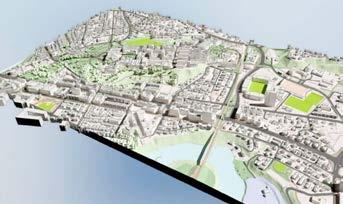
Detailed FKB data collected through collaboration between municipalities and Geovekst partners form a solid basis for developing 3D city models. (Source: Trondheim municipality)
Strong foundations for the future
The report highlights that Norway’s highly detailed FKB dataset offers a strong foundation for creating accurate 3D representations of cities and buildings. Unlike many other countries, which only have access to building footprints, Norway’s dataset includes detailed roof structures, which are crucial for generating realistic 3D models. However, the study also identifies several areas for improvement, including data consistency and integration across systems.
The work shows that Norway has a unique starting point for creating detailed 3D representations from the very detailed FKB data in 2.5D.

By Wim van Wegen, GIM International
A remarkable digital heritage initiative recently took shape in the Romanian city of Cluj-Napoca: the high-precision 3D documentation of the Casino, a sophisticated early-twentieth-century landmark that embodies the city’s prosperity and cosmopolitan spirit. The project demonstrates how mobile laser scanning workflows can streamline heritage capture in complex environments without compromising on geospatial accuracy or architectural detail.
In the Romanian city of Cluj-Napoca, the cultural heart of Transylvania, centuries of architectural identity blend seamlessly with a thriving innovation economy. Shaped by Roman foundations, mediaeval growth and Austro-Hungarian refinement, the historic centre remains a focal point of civic life and a defining backdrop for residents and visitors.
As development accelerates, preserving this architectural character has become a growing priority.
SkyGrid, a Romanian surveying solutions provider with long-standing technical expertise, initiated a project to demonstrate how handheld laser scanners – in this case
CHCNAV’s RS10 system – can be applied in a real-world heritage setting, and which benefits they offer. In Cluj-Napoca’s central park, the Casino and its surrounding architectural features, including a fountain and ornamental façades, offered the ideal test environment. The combination of rich ornamentation and height differences
created the level of surveying challenge required to showcase the system’s strengths.
The Casino’s presence within a vibrant city park added an additional layer of operational complexity. Data collection had to respect the ongoing activities of visitors, sports enthusiasts and cultural event organizers. Moreover, the site featured areas where tall trees, archways and covered terraces obstruct GNSS reception. Such environments often significantly slow down traditional survey methods or require additional instruments and time-consuming alignment procedures. In contrast, the goal of this project was to demonstrate a seamless workflow: capturing a culturally significant building quickly, unobtrusively and completely, while maintaining consistent positional accuracy from start to finish.
A technology shift is underway
For generations, the capture of built heritage has relied on static terrestrial laser scanning. While extremely precise, that methodology requires repeated instrument setup, strong line-of-sight conditions and extensive postregistration. In public urban spaces, this translates into lengthy acquisition schedules and the risk of disruptions to everyday activity.
The RS10 represents a shift away from the paradigm as described above, offering a different choice for projects of this nature. It integrates GNSS RTK, visual SLAM and Lidar into a single, handheld platform. The result
is a single, unified coordinate reference that extends across indoor and outdoor environments without the need for additional control points, loop closures or manually merged datasets.
In the Romanian project, GNSS RTK provided sub-5cm positioning accuracy outdoors, directly anchored in the country’s national coordinate system. In areas where the satellite visibility dropped, such as beneath terrace roofs or near mature trees, the device relied on visual SLAM to maintain a stable trajectory. This proved to be very successful. Throughout, high-density Lidar acquisition ensured that even the finest ornamentation was recorded at high resolution. For the operator, this meant simply walking preplanned routes while the device continuously georeferenced and recorded the geometry of façades, arcades and interior details.
The operational benefits became immediately apparent in the field. A typical survey day followed a short and highly efficient workflow: a rapid initialization and connection to the local GNSS RTK network, followed by route planning based on expected transitions between open-sky and signal-compromised environments. The scanning itself required no stoppages, no blocked-off zones and no tripod relocations, reducing inconvenience for park visitors and ensuring a discreet presence in a public space. The mobile scanning approach contributed to the urban

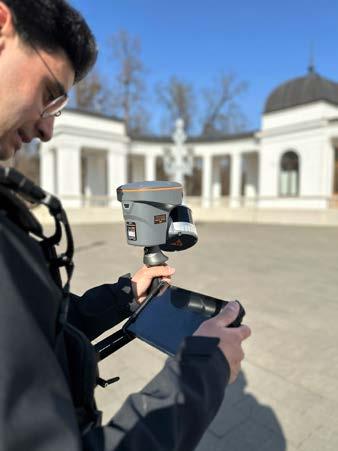
atmosphere rather than being a visual disturbance.
What traditionally might well have taken multiple days using static equipment was completed in hours. A particularly revealing test involved the portion beneath the terrace roof: a narrow, low-visibility zone that normally demands careful scanner stationing and poses a risk of shadowed geometry. Here, the operator just walked beneath the structure while the system autonomously recorded and localized the scan. This efficiency did not come at the expense of completeness; the complex ornamental details of this structure were captured with remarkable consistency from top to bottom.
The project produced a dense, colourized and fully georeferenced point cloud that could immediately serve as the authoritative dataset. On top of this, the team developed detailed three-dimensional models for visualization and volumetric studies, along with orthophotos, plans, sections and façade drawings to support architectural analysis.
Across the whole of Europe, the digital documentation of built heritage is accelerating. Climate stress, increasing tourism pressures and the need for informed restoration workflows are driving new expectations for precise, accessible records of historical assets. A shift is also taking place from reactive documentation to proactive
conservation. Instead of scanning only after a visible problem emerges, high-frequency digital inventories enable continuous assessment. Digital twins, created efficiently and with topographic accuracy, are allowing urban planners and conservation authorities to make data-informed decisions about preservation, reuse and adaptation.
The future of heritage surveying in Europe lies in scaling precision. Projects that once seemed too costly or time-consuming become feasible when mobility and absolute accuracy are combined in a single workflow. That opens the door to broader regional programmes that ensure culturally important structures are documented before their condition changes irreversibly. Romania, with its wealth of castles, fortifications and architectural landmarks, stands to benefit significantly from scalable technologies that reduce the cost and time needed to capture complex structures.
Although municipal authorities were not directly involved in the planning phase, all deliverables from the Cluj-Napoca project have been made available for future restoration work or urban planning studies. The Casino building is not only an architectural treasure but also a cultural venue that regularly hosts exhibitions, performances and public gatherings. A precise digital representation supports that role. Restoration architects can evaluate existing conditions with confidence, and heritage authorities gain a baseline for long-term monitoring. In addition, the data is well suited to educational initiatives or virtual tourism experiences that promote local identity.
The applicability of this workflow extends well beyond cultural projects. The same reality capture capabilities that proved valuable in Cluj-Napoca’s central park are being explored for infrastructure inspection, as-built verification in construction, and environmental applications such as vegetation mapping or biomass analysis. As more industries adopt spatially aware asset management, the demand for fast and accurate 3D information will only continue to grow.
Crucially, the method demonstrated in Cluj-Napoca integrates smoothly into multidisciplinary workflows. The dataset is ready for

Wim van Wegen is head of content at GIM International and Hydro International. In his role, he is responsible for the print and online publications of two of the world’s leading geomatics and hydrography brands. He is also a contributor of columns and feature articles, and often interviews renowned experts in the geospatial and hydrographic industries. Van Wegen has a bachelor’s degree in European studies from the NHL University of Applied Sciences in Leeuwarden, the Netherlands.
architects, engineers, GIS analysts and decision-makers without timeconsuming transformation or alignment. That interoperability bridges the gap between the surveying domain and a wider user base.
The Cluj-Napoca Casino project demonstrates that high-precision heritage documentation no longer requires long field days, complex setups and extensive registration workflows. By merging the strengths of GNSS RTK, visual SLAM and Lidar into a unified solution, the RS10 allowed SkyGrid’s surveyors to create a complete and georeferenced model of a complex structure rapidly and with confidence.

In a city in where history and innovation increasingly converge, reality capture technologies are helping to ensure that cultural heritage remains accurately documented, easily accessible and ready for future analysis. As urban modernization continues, the capacity to record and understand the architecture that is shaping local identity will remain essential. Thanks to this demonstration project, ClujNapoca now has a detailed digital representation of one of its iconic landmarks, strengthening the foundation for future preservation efforts and supporting the continued appreciation of the city’s rich architectural legacy. Moreover, as Cluj-Napoca continues to grow, the accurate representation of its iconic architecture can play a role not only in conservation, but also in shaping urban policy and planning decisions.
Conquering mass asset inventory for aging infrastructure with custom AI workflows
By LInda Duffy
Embracing geospatial technology enables companies to solve problems faster and more efficiently, and deliver better results for clients. A leading geomatics firm in Canada is integrating mobile mapping with AI to transform how infrastructure assets are identified, extracted and managed. The result: sharper data, safer crews and speedier project delivery times.

When aging infrastructure meets shrinking budgets, it usually means a slowdown both for traffic and for investment in technology. But at GeoVerra, Canada’s largest geomatics firm, they hit fast-forward, training artificial intelligence (AI) to inventory entire corridors in hours, not weeks.
By training AI models within Trimble Business Center (TBC) to automatically recognize and extract diverse asset types, from railway signals to highway signs, GeoVerra processes vast amounts of data in a fraction of the time compared to traditional manual methods. This approach helps the company meet the growing demands of government
agencies and private companies that need accelerated project delivery, reduced costs and more comprehensive data. For field crews and executives alike, success means removing workers from dangerous roadway and rail environments while providing clients with detailed asset information to manage infrastructure effectively.
Asset management is transitioning from a back-office function to a strategic priority to make the best use of taxpayers’ money. Faced with deteriorating infrastructure and reduced budgets, municipalities and
government agencies must understand exactly what assets they own, where they are located and what condition they are in.
The convergence of mobile mapping technology and AI-driven asset extraction makes monitoring and tracking assets possible at larger scale and higher accuracy. Where agencies once lacked quantitative data on their infrastructure, they can now efficiently map and track asset conditions across hundreds of kilometres of corridors without disrupting traffic or deploying workers into hazardous environments. Government agencies use this knowledge to prioritize spending, schedule repairs
proactively and replace infrastructure before failures occur.
Mobile mapping combined with AI-driven asset extraction offers a powerful solution for reducing both costs and time in large-scale infrastructure projects. Consider a typical 10km urban corridor survey that requires detailed topographic mapping and a full inventory of street assets such as poles, signs, manholes, traffic lights, signs, kerbs and so on. When compared to traditional field survey methods using total stations or RTK GPS, mobile mapping systems deliver significant efficiencies.
By integrating AI-based feature extraction into the workflow, project teams achieve even greater benefits. This dual approach streamlines both field data collection and office processing, resulting in substantial savings across the board. Overall project expenses are reduced by approximately 40-50%, while the total project schedule is shortened by roughly 30-40%.
GeoVerra’s geospatial group executes its own projects and supports other internal teams with advanced data collection and analysis tools for land surveying, forestry and environment, and line locating applications. Mobile mapping is essential for these operations. Using Trimble MX90, MX50 and MX9 mobile mapping systems, the team captures imagery and point clouds with vehicles traveling at normal traffic speeds,
About the
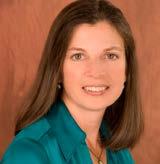
Linda Duffy is a freelance writer and market researcher at Apropos Research, an independent firm providing marketing services to the geospatial and remote sensing community since 2003.
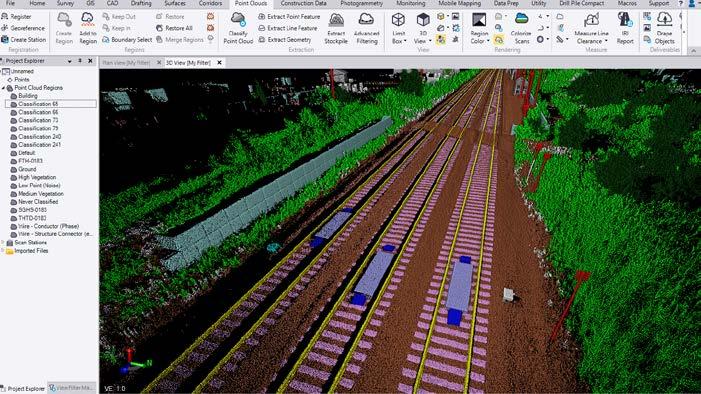
extraction functionalities with customization of AI
eliminating the need to close lanes or disrupt communities.
The real transformation happens after data collection, when the raw point clouds are converted into actionable asset inventories. Traditional methods require technicians to identify and extract each asset from point

cloud data manually. A project covering hundreds of kilometres with dozens of asset types could take weeks or months of tedious work. The extended duration often makes these projects unfeasible, forcing clients to seek alternatives.
The software used by GeoVerra includes pre-trained AI models that identify common infrastructure elements like poles, signs and barriers. These integrated capabilities for AI-driven asset extraction change the project timeline, cutting processing time from weeks to days. Moreover, these models can be customized for specific client needs and regional variations. After all, assets vary across regions. A utility pole in Ontario may differ in design from one in British Columbia, and road signs vary by jurisdiction. Rail infrastructure has subtle differences depending on the operating company and era of construction.
To address these deviations, custom AI models are trained within TBC. This process starts with technicians providing sample assets from the collected data and then identifying representative examples of each asset type that the client needs tracked.
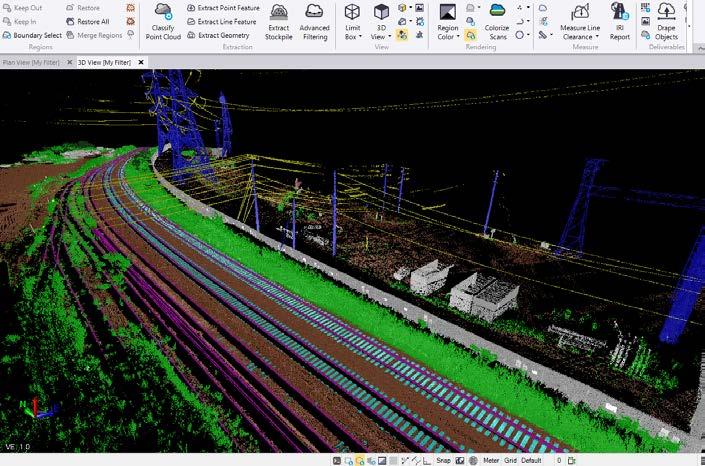
TBC’s AI then learns to recognize these specific features and extracts them from the entire dataset. The team customized nearly all features for their rail projects beyond standard poles and tracks. For highway projects, they differentiate various sign types and adapt models to new specifications within a couple of days. This foundation ensures GeoVerra does not need to start the training process from scratch for every project, so each subsequent project becomes more cost effective.
The value of these detailed asset inventories extends well beyond initial project deliverables. Government agencies unlock rich datasets that support multiple use cases over extended periods. Images and point clouds allow staff to conduct virtual site visits from the office, examining assets without the need to travel to remote locations or coordinate field access. During stakeholder meetings, project teams provide clear visual context for proposed changes or maintenance priorities. Everyone gains a better understanding of conditions and constraints.
Many clients utilize the extracted asset data within GIS systems, typically as shapefiles or in database formats. GeoVerra has developed custom GIS dashboards for some clients, providing intuitive interfaces for exploring and analysing their infrastructure. On one rail project, the rail company made the collected data widely accessible through an online portal, allowing employees across the organization to access information relevant to their roles.
Since mobile mapping captures comprehensive information about the entire corridor, agencies often discover additional uses for data that were not part of the original project scope. The existing dataset maintains long-term value over time by providing answers without incurring new data collection costs.
Before this integration, advanced asset extraction required purchasing separate expensive software licences and managing data transfers between multiple applications. Teams would process mobile mapping data in one system, classify point clouds in another and extract assets using yet another tool. Now, TBC consolidates these workflows into a single platform, streamlining the process and reducing training requirements.
Working closely with Trimble’s development team provides additional benefits, such as enabling GeoVerra to explain client challenges to technical staff and influence software development priorities. When issues arise, responsive technical support helps the team maintain project momentum.
Scalable solutions, sustainable success Interest in asset lifecycle management continues to grow, so mobile mapping expertise and custom AI models developed by early adopters will be applicable in the future. Beyond railroads and highways, the latest AI capabilities show potential for tackling citywide projects and airport initiatives, both of which could benefit from TBC’s comprehensive asset extraction and pavement analysis algorithms, according to GeoVerra. Building a library of trained models, combined with proven workflows on diverse projects, can enable geomatics firms to create a valuable competitive advantage.
One project that demonstrates the scale and efficiency made possible by this technology is a rail project in the Greater Toronto Area. Using mobile mapping systems, the team collected 970km of rail corridor. A trained AI model reviewed the point cloud and extracted 33 different types of assets at the rate of 15km of track in just 25 minutes. The project needed high feature-extraction accuracy to ensure every asset was captured and correctly classified. Manual extraction at this scale would have been financially and practically impossible. With AI tools in TBC, GeoVerra delivered comprehensive results that met the client’s timeline and budget.
Meanwhile, a highway project in Ontario showcases how trained models create compounding benefits. Along 125km of highway, the team extracted more than 8,000 individual features across 21 different asset categories. Moreover, because highway assets remain consistent across the province, established models will work efficiently on fresh datasets. This means that the same trained AI model can be applied to new data collections when Ontario expands or upgrades its highway network in the future.
By Wim van Wegen, GIM International
The most recent edition of Intergeo – the world’s leading geospatial gathering –left no doubt that geoinformation has moved into the mainstream. What was once a specialist field now shapes societal decisions relating to energy, mobility, climate policy and urban development, to name but a few areas of relevance. This article presents a roundup of the key trends, developments and innovations that were on display in Frankfurt in early October, as well as a sense of the optimism in the industry.
From satellites observing the planet to drones mapping the surface, and from the rise of GeoAI to the immersive world of 3D digital twins, at Intergeo 2025 there were countless tangible examples of geoinformation’s societal relevance. The exhibition floor overflowed with innovation and ambition, from advanced reality capture to the latest developments in AI-driven analysis. Earth observation also claimed a larger share of attention this year, although this is not surprising as it has become one of the essential pillars for mapping and understanding the environment, both on a grand scale and at local level.
Making industry themes more tangible
With a slightly different structure compared with previous years, Intergeo 2025 introduced some fresh formats that increased the dynamism and made key industry themes more tangible than ever. For instance, the Application Dome was a vibrant showcase of practical solutions spanning smart cities, construction, mobility and energy. On the Main Stage, the spotlight was on GeoAI, sensor integration and workflow optimization, all topics that continue to redefine how technology connects and empowers the geospatial profession. Yet beyond the
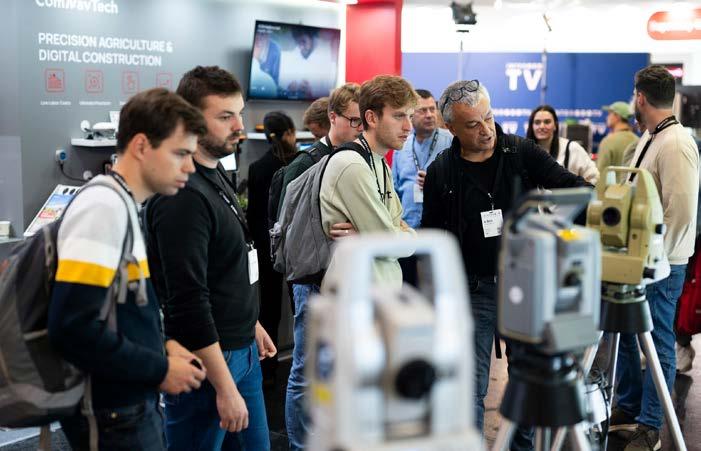
Intergeo 2025 captured the essence of a connected geospatial ecosystem – a place where technology, innovation and collaboration merged seamlessly, and ideas moved as freely as the data that drives the industry.
impressive technology, it was the exchange of knowledge and experiences that gave the event its real energy – connecting product, practice and policy to turn insights into action, and translating innovation into tangible outcomes for the world beyond the exhibition floor.
For the first time, reality capture was conceptually integrated across the entire event, linking the Conference, both Expo stages and the Reality Capturing Podcast Studio, realized in cooperation with Intergeo partner 3Dise. “With the Expo stages, we showcase cutting-edge innovations and opened perspectives for countless use cases,” said Olaf Freier, CEO of HINTE Expo & Conference, the team behind Intergeo. “Reality capture is the next big topic, unlocking new potential. For me, one thing has become clear: data is not just a resource, it is a responsibility.”
Reality capture is central to the theme that stood out at Intergeo 2025 above all others: the growing coherence between the digital and physical worlds. The widespread focus on digital twins and building information modelling (BIM) was a stark reminder that resilient infrastructure – whether for transport, energy or urban planning – begins long before construction starts nowadays. Engineering design is now an online, data-driven process. With today’s scanning and surveying technologies setting new benchmarks in efficiency, data quality and
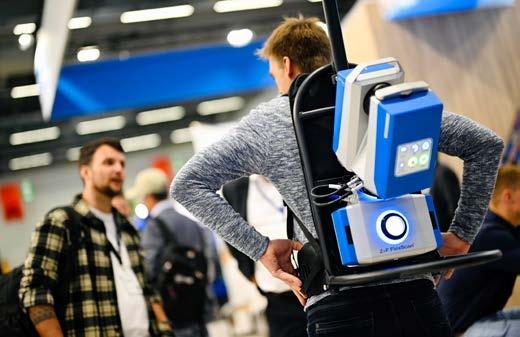
precision, 3D models can be created faster and in more detail than ever before.
The industry’s thirst for ever-more efficient, accurate and flexible ways to capture and understand the world in three dimensions was reflected in the abundance of portable/wearable/mobile mapping solutions at Intergeo. For example, there were so many handheld SLAM scanners on display – at times, it felt as if there was one on every stand! – that the market seems to be nearing saturation, which will inevitably lead to consolidation. One could also question whether such solutions are genuine examples of innovation, or whether many manufacturers are actually leaning (rather heavily) on the ideas of earlier pioneers? As with all hardware, what matters most is the technology under the hood, in combination with how it helps to enrich the user experience and streamline workflows for geospatial professionals. So it will be interesting to see which of the current suppliers will still be around for Intergeo 2028, for instance.
At the traditional midweek press conference, the atmosphere was one of optimism and momentum. Despite global uncertainty, the panel members – Ralf Mosler (Autodesk), Boris Skopljak (Trimble), Sebastian Pache (Esri Deutschland), Rudolf Staiger (president of the Society for Geodesy, Geoinformation and Land Management [DVW] and organizer of Intergeo), Henning Sandfort (Hexagon Geosystems and Leica Geosystems) and Olaf Freier (Hinte Expo & Conference) –all agreed that the geospatial sector continues to move forward with purpose and confidence.
Rudolf Staiger captured that sentiment early on. “These are insecure times when it comes to our safety,” he said, “but I don’t see the insecurity here [at Intergeo].” The DVW president underlined the strength of the community: “We have the technology, the knowledge, and the tools. What we need more is a positive mindset”. He returned several times to the topic of data, calling for a new awareness of its value and validity. “90% of the data created by mankind is less than two years old,” he observed. “This will continue.” The question, he argued, is no longer how much data we can collect, but how it is handled and verified. “Nobody wants fake news – or fake data.” His words resonated at a time when AI both amplifies
opportunities and raises new questions about trust. The abundance of data, he implied, is both a strength and a pitfall: while information is everywhere, turning it into actionable insight remains a shared challenge. “AI has smashed the industry,” commented Olaf Freier – not as a warning, but as recognition of how profoundly artificial intelligence is reshaping the geospatial world.
He went on to emphasize the event’s role as the meeting point where innovation and people truly connect. That theme of connection – between data, people, and processes – was echoed by other panellists at the press conference. Trimble’s Boris Skopljak expressed enthusiasm for the spirit of collaboration he sensed at Intergeo. “I love that we’re showing up together, as an industry,” he said. For him, working together is essential to “elevate the industry” and demonstrate its ongoing relevance. Skopljak dismissed any notion that the geospatial field might be stagnating. On the contrary, he described it as expanding into new domains, where users increasingly come from outside the traditional surveying community. “The world begins at the office,” he remarked, highlighting the importance of connecting field data with broader decision-making processes. He also pointed out that subscription-based access is no longer limited to software or cloud platforms, but now extends to hardware and equipment too – a sign of how digital usage models are reshaping the profession. “There is no one solution that wins it all,” he added. “It’s the combination that makes the difference.”
Ralf Mosler of Autodesk built on that idea, pointing out the importance of integrating BIM and geospatial information systems (GIS): “BIM plus GIS is what we need in order to solve challenges and help the world forward.” Yet he also acknowledged that “our industry is still siloed, and this is a problem.” To move ahead, he said, interoperability and open data are key to “setting things in motion”. Mosler also reflected on how the younger generation approaches technology differently, emphasizing immersive reality as an environment that fits their way of working. His advice: “We need to train our digital muscles.”

The
as
At GIM International, we remain committed to keeping our finger on the pulse of the latest hardware and software in the geospatial field, and we definitely regard Intergeo as an effective way to do so. What was your personal highlight at Intergeo 2025? And where do you think we’ll see noteworthy developments in the coming years? We’re keen to hear your thoughts. Send an email to: wim.van.wegen@geomares.nl
Untapped potential
For Esri’s Sebastian Pache, the Intergeo energy was unmistakable. “You can feel the heartbeat of the geospatial community here,” he commented, highlighting the event’s unique momentum. At the same time, he stressed the need for collaboration in shaping the frameworks that underpin progress. “All stakeholders are responsible for the standards,” he reminded the audience. “Standards? Yes, but please together, as a team.”
Henning Sandfort, president of Hexagon Geosystems and CEO of Leica Geosystems, summed up the current tone of the industry: “A lot of positive sentiment, despite the environment we are in.” For Sandfort, progress depends on how collaboration is structured within and between ecosystems. He emphasized that “the whole industry builds on the expertise of our surveyors,” and pointed to the construction sector as an example of untapped potential: “Construction still holds so many opportunities to drive meaningful change.”
Geospatial ecosystem
Intergeo 2025 came to life as a vibrant geospatial ecosystem, where technology, innovation and collaboration seamlessly converged. In the exhibition halls, ideas flowed as naturally as the data streams that define the industry itself. From sensor systems and AI-driven workflows to real-world applications in construction, mobility and
Intergeo at a glance
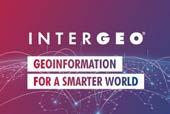
• 18,500 visitors from 119 countries
• 530 exhibitors
• 1,200+ conference participants from 52 nations
• Innovations included: advanced sensor technologies, high-precision real-time positioning, AI and powerful software tools
• Next edition: 15-17 September 2026 in Munich, Germany
energy, every corner offered a glimpse into the future of spatial intelligence. Everywhere you turned, something new demanded attention: smarter sensors, faster workflows, sharper insights. The sheer density of innovation was a vivid reminder of just how fast this industry continues to evolve, not least thanks to partnerships between different manufacturers who are combining their offerings like pieces of a puzzle to develop truly groundbreaking solutions.
In line with tradition, the energy of the event shifted noticeably on the Wednesday as large groups of students filled the halls, eager to explore the technologies shaping the future of mapping and measurement. Their presence added a refreshing sense of curiosity and vitality, reminding everyone that the next generation is waiting in the wings ready to take over the baton. Although more still needs to be done to attract students to geospatial programmes, this influx of youngsters brought hope that the geospatial future may look bright after all.
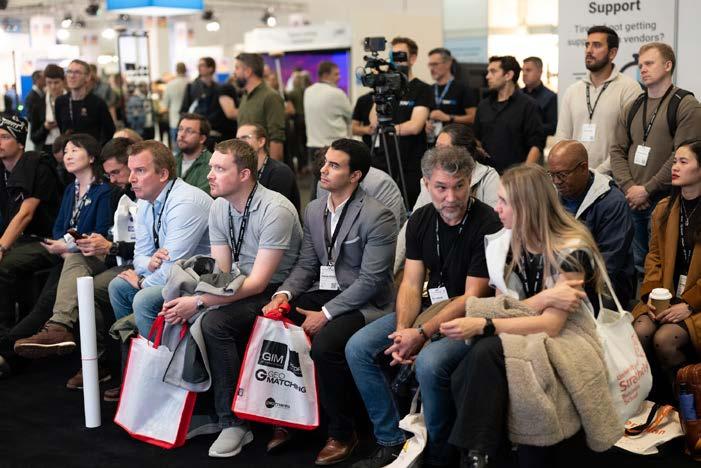
Intergeo 2025 was particularly busy on the Tuesday and Wednesday, with Wednesday traditionally seeing a strong presence of students. (Image courtesy: Nico Herzog Fotografie / Intergeo)
Throughout the event, the GeoCampus was a popular meeting point for talent, science and industry, reminding everyone of the value of gathering as a community to exchange knowledge, ideas and energy. As Olaf Freier said during the press conference, the human element remains essential: “Live events such as Intergeo are irreplaceable. This is where technology meets the community.” His fellow panellist Sandfort made a resonating statement: “We talk a lot about the community, but we also need to find ways to talk outside our community.” And perhaps that’s where the next frontier for Intergeo lies: not only in showcasing what the geospatial sector can do for itself, but in opening the doors wider, inviting visitors from beyond the traditional boundaries of the field. After all, the impact of geospatial thinking reaches far beyond maps and measurements alone; it shapes the way society plans, builds and understands the world.
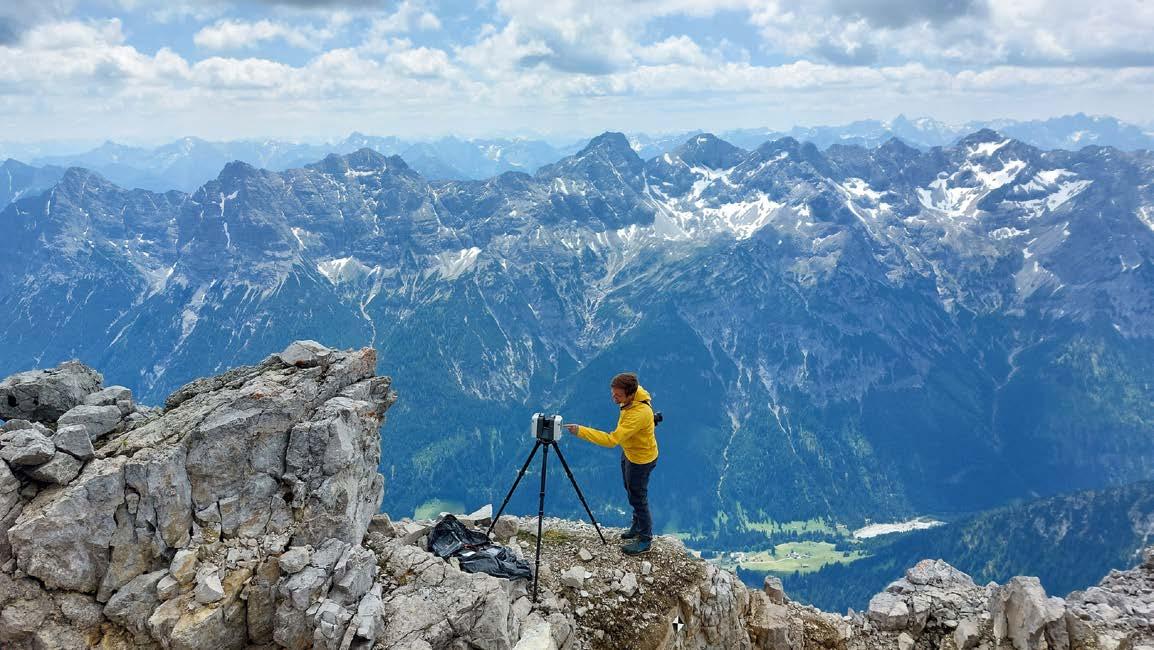
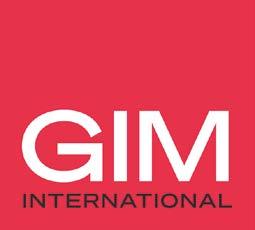
Your gateway to the latest geomatics trends, expert opinions, cutting-edge technologies and global project updates technologies and global project updates
Your gateway to the latest geomatics trends, expert opinions, cutting-edge
In-depth articles from industry leaders
In-depth articles from industry leaders
Updates from international trade shows and conferences
Updates from international trade shows and conferences
Industry news, case studies and tech insights
Industry news, case studies and tech insights
Empowering the geospatial community
Empowering the geospatial community
Follow GIM International on LinkedIn
Follow GIM International on LinkedIn → → Linkedin.com/company/gim-international Linkedin.com/company/gim-international
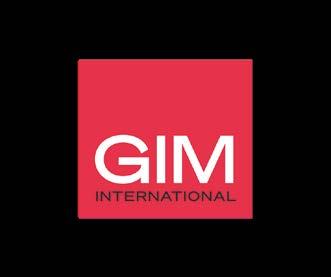
Secure year-round visibility with GIM International

Online company profile
Home page highlight
Member highlight
2x Company highlight
4x Social post
1/1-page ad in BG '26
Company profile in BG '26
EUR 3,150
EUR 3,495

Online company profile
Home page highlight
Member highlight
2x Company highlight
2x Social post
1/2-page ad in BG '26
Company profile in BG '26
EUR 2,595

Online company profile
Home page highlight
Member highlight
2x Company highlight
1x Social post
Company profile in BG '26

EUR 1,395

shallow water and coastal zone mapping opportunities
By Anders Ekelund, vice president airborne bathymetric Lidar, Hexagon
The exploration and classification of the seabed have always been crucial for various scientific, environmental and commercial purposes. Traditional methods of seabed classification have relied heavily on sonar and direct sampling techniques. However, recent advancements have opened up new possibilities, particularly through the fusion of airborne imaging and bathymetric Lidar data. This article delves into the potential of these fused datasets for large-area shallow seabed classification.
Bathymetric Lidar (light detection and ranging) technology offers the ability to create precise 3D maps of the seabed, providing valuable data on its morphology. Additionally, the radiometric properties of both the water volume and the seabed are recorded in the Lidar wavelength (515nm). The Lidar laser pulses are typically emitted with a constant pulse energy from a constant altitude, ensuring
that the radiometric response does not vary with sun angles, cloud shadows and atmospheric losses as it does with passive imaging. Furthermore, the shape of the received reflection can provide information on whether the emitted beam has been reflected off high vegetation or a flat seabed, for example. All this information can be used to aid a seabed classification algorithm.
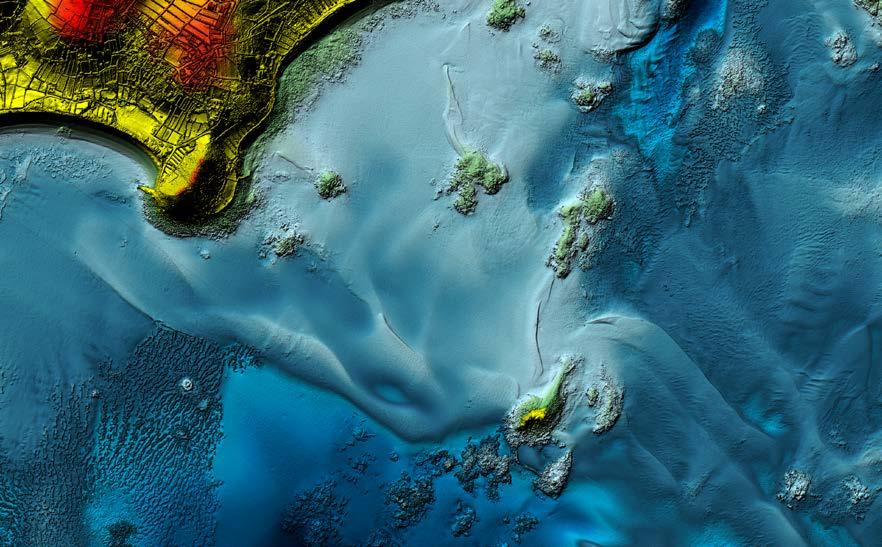
Modern bathymetric Lidar systems also integrate airborne imaging in four bands: red, green, blue and near infrared (NIR delivering a resolution of typically 5cm). This passive imaging primarily aids in seabed classification, as different materials reflect different wavelengths. Unlike imaging over land, water significantly impacts the measured radiometry, which must be compensated for. The water surface can cause specular reflections from the sun (sunglint), affecting certain sections of the image. Additionally, the transmission varies for different wavelengths: water is almost opaque for NIR, the red band provides information for only a few metres even in clear waters, and the blue and green bands have significantly higher transmission. Creating useful radiometric seabed information from airborne imaging
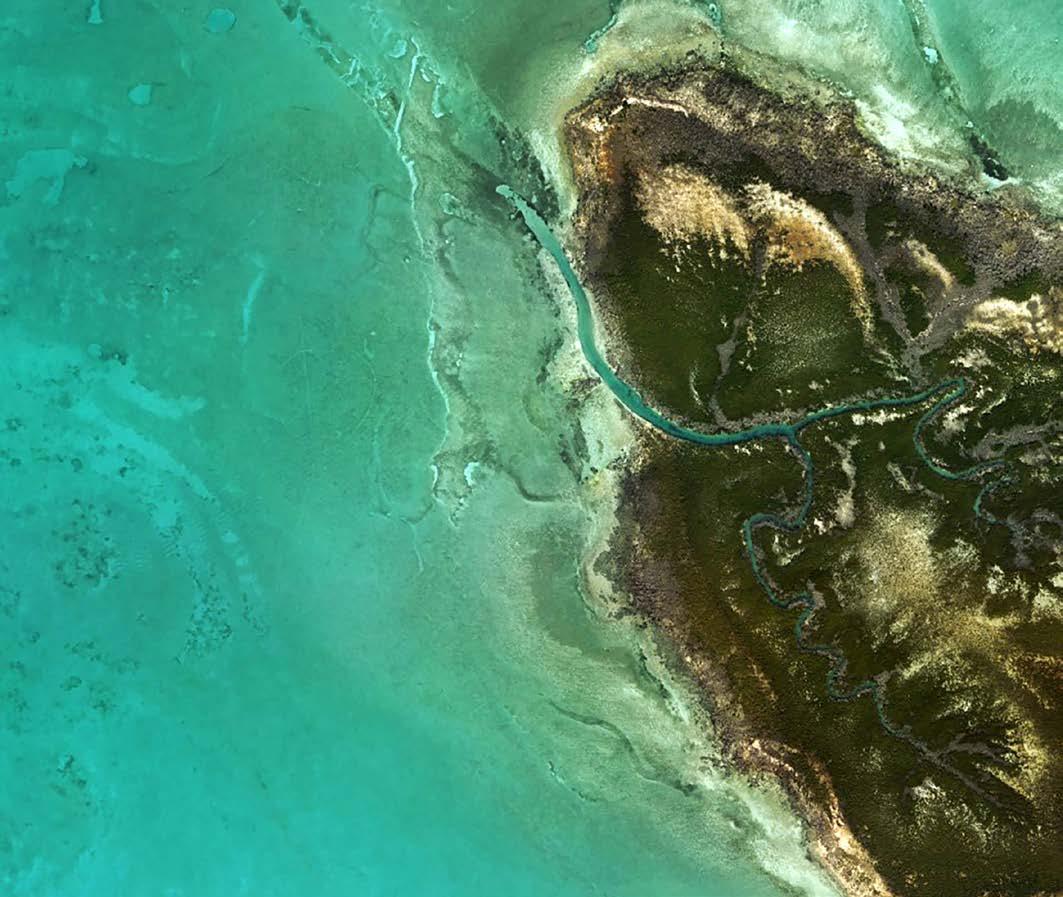
typically requires advanced image normalization algorithms, including solar radiation and sun angle modelling, sunglint removal and compensation for water radiometric properties. The depth measured from Lidar plays a significant role in aiding these normalization algorithms.
Airborne hyperspectral imaging collects passive imaging with a lower spatial resolution but in many more and narrower bands than airborne imaging. The additional bands offer more accurate modelling of water properties and seabed radiometry. However, like airborne imaging, advanced algorithms are needed for data normalization for seabed classification use.
The fusion of imaging and Lidar data combines the strengths of all technologies, resulting in a more comprehensive and accurate representation of the seabed. By integrating passive imaging radiometric data with precise 3D bathymetric information, we can gain deeper insights into the seabed’s characteristics. This fusion allows for the identification of subtle features that might be missed when using either technology alone.
1. Habitat mapping: Fused imaging and Lidar data can be used to
create detailed habitat maps, identifying different types of seabed environments and the species that inhabit them. This information is crucial for marine conservation efforts and the management of marine protected areas. This can include additional factors such as seabed slope and roughness derived from the bathymetric information and ‘health’ metrics such as chlorophyl presence and algal blooms from the hyperspectral data.
2. River exploration: Bathymetric Lidar is heavily used for river mapping, primarily for the purpose of flood modelling and mitigation. The radiometric information can however reveal important information, such as playgrounds for salmon habitats and the presence of run-off from adjacent land use.
3. Environmental monitoring: Fused data can be used to monitor changes in the seabed over time, as well as local pollution in the water, providing valuable information on the impacts of human activities such as trawling, dredging and sewage outlets and natural events such as storms and earthquakes.
4. Archaeological surveys: Underwater archaeology can also benefit from the fusion of imaging and Lidar data. Detailed maps of the seabed can reveal the locations of shipwrecks, submerged settlements and other archaeological sites, aiding in their preservation and study.

Figure 3: Modern freshwater pipeline and remains from Bronze Age construction on the seabed. The Bronze Age construction is estimated at 3,300–3,500 years old, located at about four metres depth due to land mass elevation change.
1. Sonar: Sonar technology is widely used, and significant advancements are taking place, particularly in utilizing sonar backscatter information for seabed classification. Compared to airborne capture, sonar covers much smaller areas and its efficiency decreases with decreased depth, whereas airborne capture maintains constant efficiency. Many bathymetric Lidar survey providers also capture shipborne sonar data and fuse the datasets to optimize collection efficiency. It is important to note that sonar measures different properties compared to airborne data. While sonar measures the ‘hardness’ of the seabed, airborne data collects ‘radiometric’ properties.
2. ROVs and direct underwater sampling: Equipping ROVs (remotely operated vehicles) and/or towed underwater devices with cameras and sonar technology allows for data capture very close to the seabed with remarkable resolution. This high-resolution data enables detailed species recognition, classification and identification. The primary disadvantage compared to airborne capture is the limited area coverage. However, when used in combination with airborne capture, such datasets are ideal for creating training datasets for machine learning algorithms, enabling large-scale classification.
3. Satellite-based seabed classification: Satellite-captured multispectral data offers another method for seabed classification.
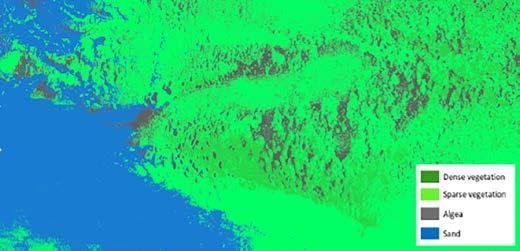
4:

Anders Ekelund is vice president of airborne bathymetric Lidar at Hexagon’s Geosystems division, where he develops solutions and services for the bathymetric industry. With 20 years of experience in airborne technologies, he previously served as managing director of Airborne Hydrography AB (AHAB), acquired by Hexagon in 2013.
Ekelund holds an MSc in Mechanical Engineering, specializing in automatic control theory, from Linköping University, Sweden.
Unlike airborne data, satellite remote sensing is heavily affected by atmospheric conditions, where small errors in atmospheric correction can lead to significant errors in the measured radiometric properties of the seabed. Additionally, cloud coverage can severely impact the capture of satellite images, making it challenging to find suitable images to be used, depending on the area of interest. Compared to airborne imaging, satellite resolution is much lower, and compared to airborne Lidar, depth penetration and accuracy are significantly less. However, combining airborne Lidar and satellite data can be an effective approach for scaling.
Data fusion of multiple sensors offers large potential for enhanced seabed modelling. These technologies provide different resolutions, measure multiple properties and cover different parts of the seabed. By combining the strengths of multiple data sources, we can achieve a more complete, detailed and accurate understanding of the seabed’s characteristics. This has far-reaching implications for habitat mapping, resource exploration, environmental monitoring and underwater archaeology. As technology continues to advance, the possibilities for using fused data in seabed classification are bound to grow, paving the way for new discoveries and innovations in marine science.
Airborne topobathymetric Lidar and imaging offer an unmatched combination of accuracy and resolution for nationwide coastal and inland water surveys in shallow waters. Recent developments have increased collection efficiency by up to 250% compared to previous generations, enabling not only one-off collections but also repetitive surveys needed to monitor changes over time in a cost-efficient manner. As about 40% of the world population lives in coastal zones, coastal nearshore information is highly valuable for maximizing the return on infrastructure investments, mitigating risks from coastal changes and preserving essential marine habitats. More and more countries understand the value of an updated national coastal elevation model and the market for airborne bathymetric Lidar is therefore likely to continue to grow.

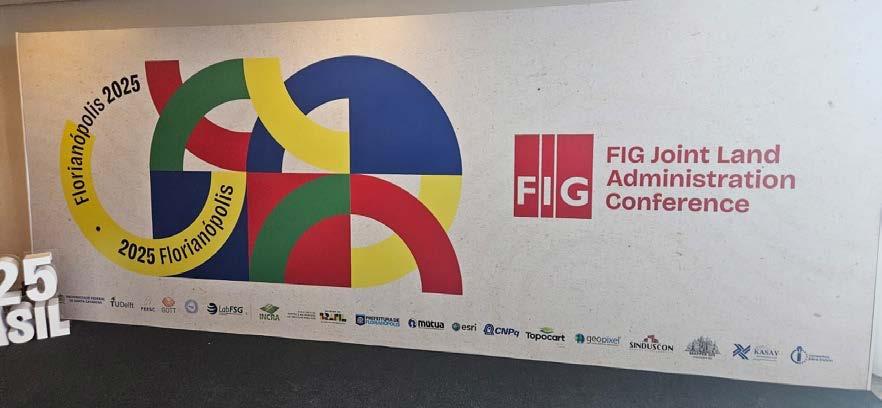
From 3-5 November 2025, the Joint Land Administration Conference was organized in Florianópolis, Brazil. The joint event included the FIG Commission 7 (Cadastre and Land Management) Annual Meeting, FIG Commission 8 (Spatial Planning and Development) Annual Meeting, UN Habitat Social Tenure Domain Model (STDM), and 13th International FIG Workshop on the Land Administration Domain Model & 3D Land Administration.
This was the first official FIG event ever held in Brazil, and one of only a handful to take place in the Latin America region. The local organization was in the hands of the Federal University of Santa Catarina. The interest was high: 123 extended abstract submissions were received by the organizers. Each one was reviewed by at least three members of the scientific programme committee, providing valuable feedback to the authors as well as the basis for deciding which to accept as promising/high-quality submissions. The authors of the promising submissions were invited by the organizers to submit a full paper. In total 76 full papers were received, all checked by the editors of the proceedings.
While the event was truly global, bringing together over 150 delegates from more than 16 countries onsite and about 50 participants online, it also carried a very local and uniquely Brazilian flair. Brazilians
are known for their warmth, creativity and hospitality, and this event was no exception. There was live music between sessions, bright lights, colour and a lot of energy. With a full programme running from 8:30 to 18:30 each day, it was both lively and productive, culminating in the publication of a threevolume set of proceedings totalling nearly 1,000 pages, all freely available online.
Innovative features included three-way language translation (Portuguese, Spanish and English), which allowed delegates to interact seamlessly and in real time during sessions. The entire event was also streamed live, with online participants able to pose questions and get involved. Additionally, the event introduced the ‘poster pit’ concept (ultra-quick one-minute presentations to attract participants to the posters), enabling all papers to be presented in a single stream over the three days.
Brazil’s surveying and land governance landscape is complex, with divisions between federal and state responsibilities, rural and urban areas, and Indigenous, public and private tenures, as well as differing aims between taxation and registration systems. Yet, innovation is happening – within government, the private sector, and through collaboration with academia. The shared language of the UN-GGIM Framework for Effective Land Administration (FELA), Fit-ForPurpose Land Administration (FFPLA) and
Land Administration Domain Model (LADM) frameworks resonated across the event, transcending linguistic and institutional boundaries and underscoring the importance of global frameworks in fostering dialogue and developing practical solutions.
The event concluded with a roundtable discussion centred around the question ‘How do conceptual frameworks interact in favour of climate georesilience and sustainable development?’. The FIG community provided valuable input for the 2025 United Nations Climate Change Conference (COP30, Brazil) in the week after. Suggested land administration contributions included: avoid further increase in climate problems by giving Indigenous people the rights to manage the forests, use LADM Part 5 with the climate change adaptation profile (against extreme heat, drought, rain, etc.) and the LADM extension for disaster risk management (LA-DRM), have checking mechanisms in place (from humans as sensors to satellite data with artificial intelligence), and report via Sustainable Development Goal (SDG) land-related indicators based on LADM.
More information
The volumes of proceedings, https://www.gdmc.nl/3DCadastres/ workshop2025/programme
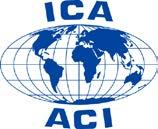
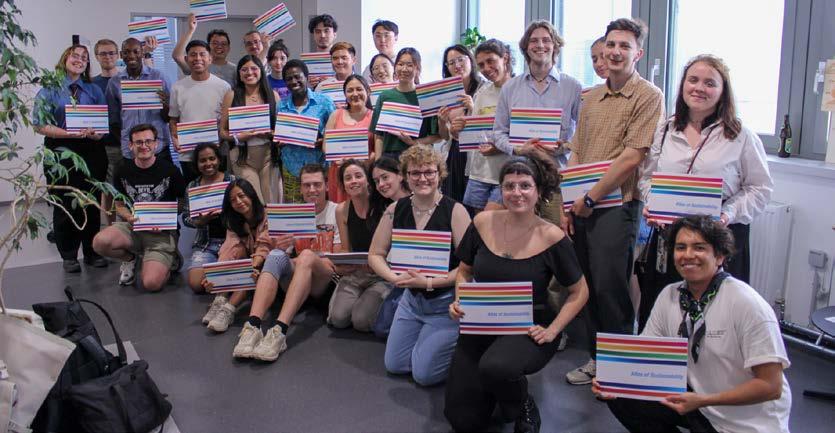
Cartography is changing. Long regarded as a means of representing the world, it is increasingly being used to influence it. This shift – towards what many now call ‘actionable cartography’ – positions maps as tools for decision-making, communication and measurable impact rather than as static visual summaries.
A recent example of this approach is the Atlas of Sustainability , a new opensource publication from the International Cartographic Association (ICA). Released in 2025, the atlas demonstrates how thoughtful map design can support the United Nations’ 2030 Agenda for Sustainable Development. It doesn’t simply illustrate data; it frames spatial information around questions of relevance, responsibility and action.
The atlas was produced in just one week as a ‘Design Challenge’ at Technische Universität Wien under the leadership of Prof Robert Roth from the University of Wisconsin-Madison. No less than 38 student cartographers from 26 countries collaborated to create 17 spreads, each devoted to one of the Sustainable Development Goals (SDGs). Each contribution combines analytical maps with concise design statements explaining how visual choices were made, which problems were addressed and what responses might follow. The result is a compact but
sophisticated example of how design and data can converge to support sustainability.
What makes the Atlas of Sustainability noteworthy is its process as much as its product. The open, rapid and collaborative method contrasts sharply with traditional atlas production, which can take years and rely on limited authorship. By opening its workflows, data sources and design materials on GitHub, this atlas enables replication and adaptation by educators, researchers and practitioners worldwide. It is a practical demonstration of how open geospatial methods can yield tangible, policy-relevant outcomes.
For professionals across the geospatial sector, actionable cartography raises important questions. How can maps better inform decisions? What design strategies make spatial information more persuasive or comprehensible? And how can mapmaking become a participatory act rather than a closed process? The Atlas of Sustainability offers useful answers. It shows that integrating design reasoning, clear communication and open data can transform mapping into an operational component of sustainability planning.
The atlas also aligns with broader trends in the industry, such as greater interdisciplinarity, agile production and the use of cartography as part of
systems thinking. ICA Commission Chairs Eric Losang and Vit Voženílek describe it as “a catalyst for learning, action and social connection,” emphasizing that cartography’s role now extends beyond depiction to engagement.
Printed copies were presented at the UN Global Geospatial Information Management (UN-GGIM) meeting in New York, underscoring its relevance to governance and policy. But the atlas’s real significance lies in its adaptability; its methods and materials can be applied to local or sector-specific sustainability challenges anywhere.
For readers of GIM International , the message is straightforward. As the boundaries between mapping, analytics and decision support continue to blur, the value of a map increasingly depends on what it enables people to actually do. The Atlas of Sustainability exemplifies that principle; it is not just an atlas to read, but a model to apply.
By Georg Gartner, president, International Cartographic Association
More information
Access the open-source atlas and resources at icaci.org
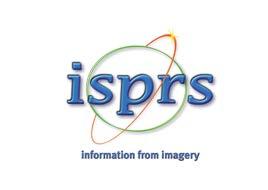
The XXV International Society for Photogrammetry and Remote Sensing (ISPRS) Congress in Toronto, Canada, from 4-11 July 2026 is not only a scientific meeting. It also marks the commencement of the society’s next period with the election of new council members, technical commission presidents and vice presidents.
The results will decide who will lead the society for the four years following 2026. In this period, the selected professionals will play an important role in shaping the society, for its members and their countries, in the scientific areas of ISPRS, in international cooperation, and open science, without any discrimination on grounds of race, religion, nationality or political philosophy.
Successful candidates for the following open positions will be selected and approved by the General Assembly held at the XXV ISPRS Congress in Toronto:
ISPRS Council officer positions for the 2026-2030 term
Ordinary members may bid for ISPRS president, vice president, secretary general or treasurer positions. The responsibilities and obligations of the elected officers are set forth in three documents: ISPRS BYLAW VIII (Officers) and BYLAW XI – (Council), Responsibilities and Duties of ISPRS Council Members in the Green Book and Guidelines.
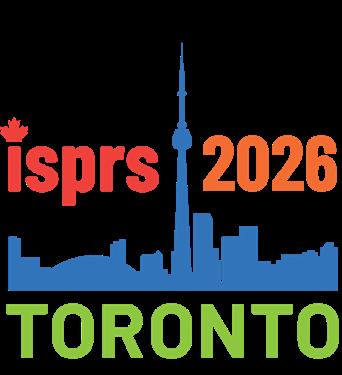
Bids to host XXVI ISPRS Congress 2030
Ordinary members may bid to host the XXVI ISPRS Congress 2030 by nominating a congress director. The congress director is a member of the ISPRS Council. The responsibilities and obligations of the congress director are set forth in the BYLAW IX (Congress) and BYLAW XI (Council), Responsibilities and Duties of ISPRS Council Members, Guidelines, and a Sample Congress Contract.
Ordinary members may bid to host technical commissions in the 2026-2030 term. Each technical commission will have one president, one vice president and one scientific secretary. The bid shall be presented by the proposed commission president who also introduces the vice president from the co-hosting ordinary member. The responsibilities and obligations of the elected officers are set forth in BYLAW XIII (Technical Commissions), ISPRS Orange Book, and a Sample Symposium Contract.
ISPRS ordinary members wishing to bid for any of these positions must submit an application to the ISPRS secretary general before 1 March 2026.
Ordinary members who consider themselves in a position to support candidates for the respective offices, or
who wish to bid for the XXVI Congress in 2030, are welcome to send the necessary documents to the secretary general by the given deadline.
The candidates will present their proposals during the General Assembly of the XXV ISPRS Congress 2026. All ordinary members are entitled to vote, and the results will be announced directly after voting.
The General Assembly participants will no doubt have a difficult decision to vote for the best of the best from the proposed ISPRS professionals.
Those who are interested in leading new working groups are encouraged to attend the congress to discuss their topics and programme with the newly elected technical commission presidents and vice presidents.
The ISPRS Congress also offers an opportunity to acknowledge exceptional ISPRS members and scientists by presenting dedicated ISPRS Awards. Nominations for awards can be proposed by individuals or organizations. Please see the ‘Awards Offered in 2026’ brochure and the Awards web page.
ISPRS Secretary General Jiang Jie, isprs-sg@isprs.org
More information
ISPRS BYLAW VIII, https://www.isprs.org/documents/bylaws.aspx BYLAW XI, https://www.isprs.org/documents/bylaws.aspx Green Book, https://www.isprs.org/documents/pdf/240120-Green_Book.pdf Guidelines, https://www.isprs.org/documents/guidelines/c-gide.aspx Sample Congress Contract, https://www.isprs.org/documents/Default.aspx Awards Offered in 2026 brochure, https://www.isprs.org/society/awards/ISPRS%20 Awards%20Offered%20in%202026_20250906_final.pdf Awards web page, https://www.isprs.org/society/awards.aspx
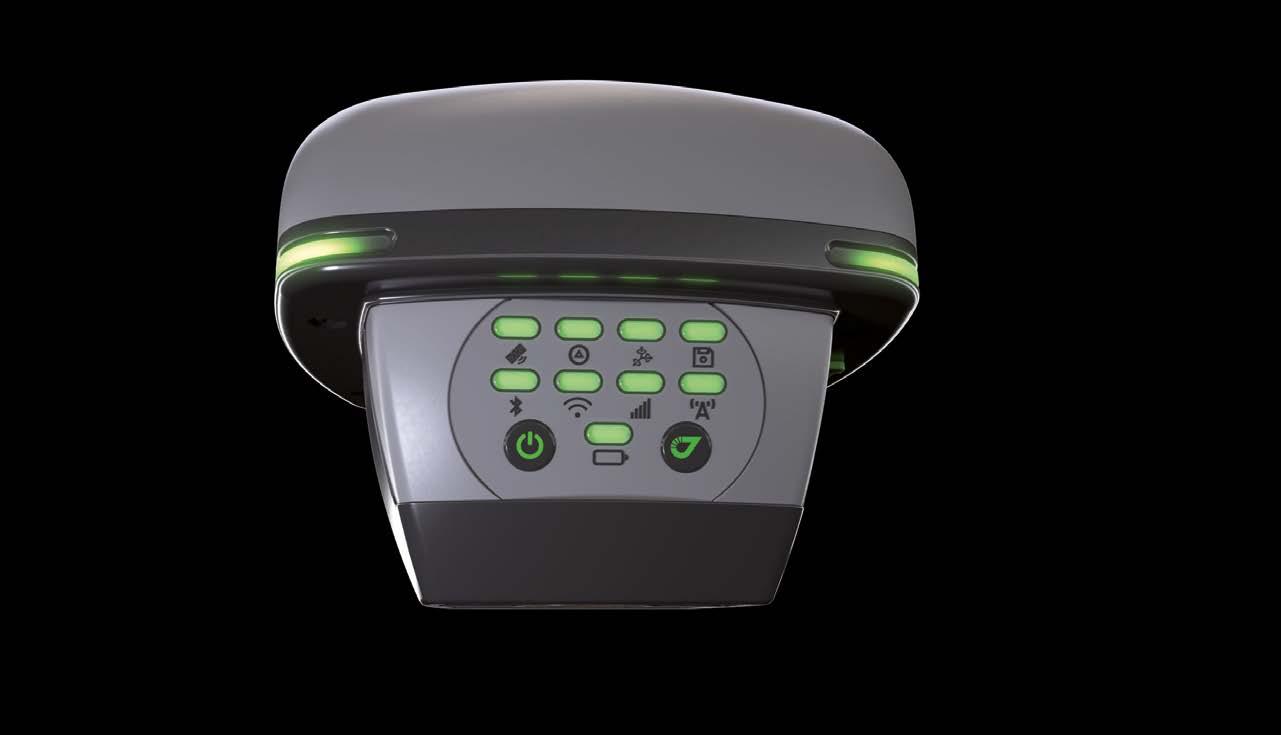
JAVAD GNSS introduces PulserOne, a nextgeneration GNSS smart antenna engineered to deliver uncompromising precision, durability and simplicity for professionals who demand more from their field equipment. Designed and manufactured at JAVAD’s state-of-the-art facility in San Jose, California, USA, PulserOne combines cutting-edge technology with rugged reliability, setting a new benchmark for geospatial solutions.
Industry-leading JAVAD technology
At its core, PulserOne leverages proprietary JAVAD ASIC technology, offering multi-constellation, multi-frequency tracking across all major GNSS systems for centimetre-level accuracy in the most challenging environments. With 874 channels, advanced anti-jamming protection and support for RTK and RTPK, PulserOne ensures robust positioning even under canopy or urban interference.
Pulser Lighting System & eSIM connectivity
Experience the new Pulser Lighting System, an intuitive visual interface that simplifies field
workflows by providing real-time status at a glance. Combined with eSIM connectivity, integrated UHF and cellular modems, patented in-pole antenna design and JAVAD’s open-platform philosophy, PulserOne delivers unmatched flexibility, allowing users to connect to their preferred RTK correction service without hidden fees or proprietary lock-ins.
Weighing just 1.1kg
Built with a lightweight magnesium alloy housing and weighing just 1.1kg, PulserOne is as tough as it is portable. Its long-lasting swappable battery supports extended field sessions, while free lifetime firmware updates guarantee your investment stays future-ready.
Whether you’re performing land surveys, utility mapping or precision construction, PulserOne empowers you to work faster, smarter and with confidence. It’s not just a receiver – it’s a modern solution designed to keep pace with the evolving demands of geospatial professionals.
Experience a leap forward in GNSS innovation with the reliability and precision of PulserOne.
